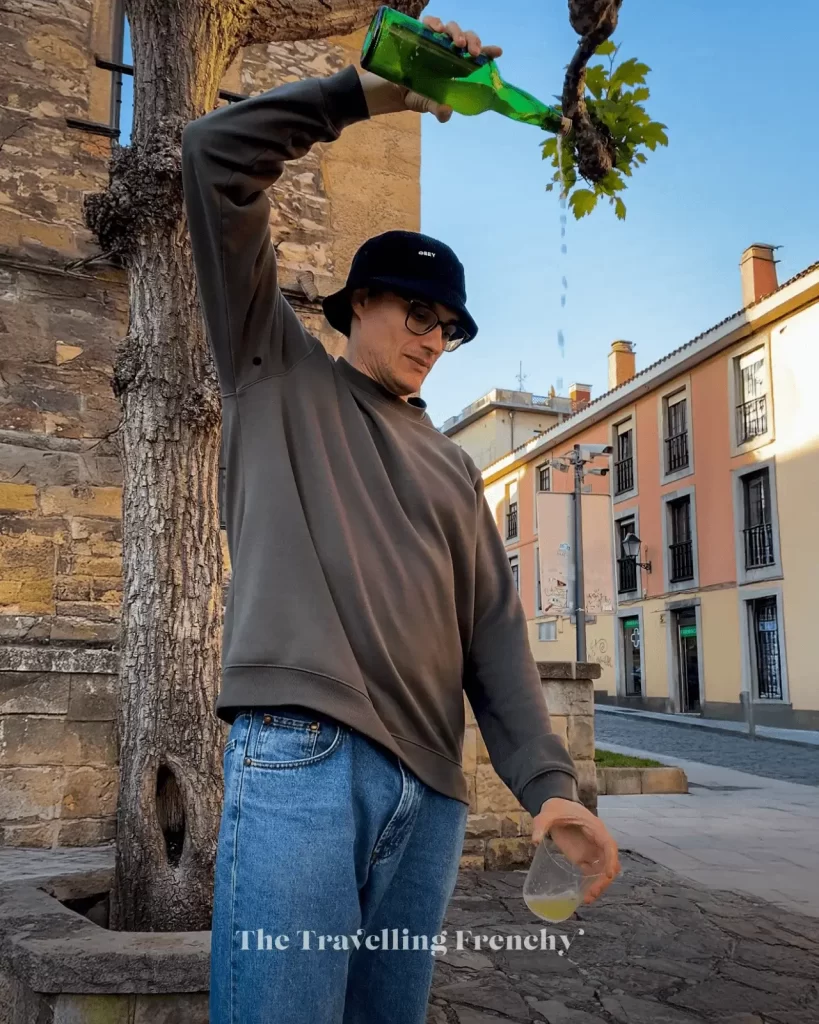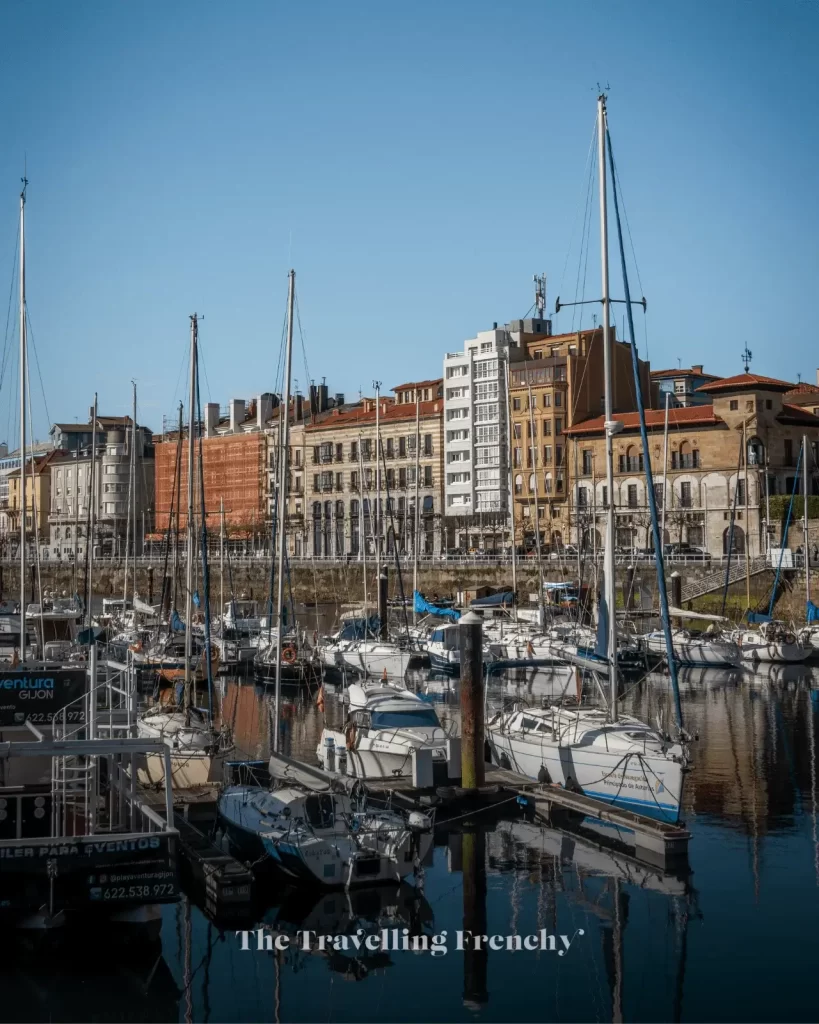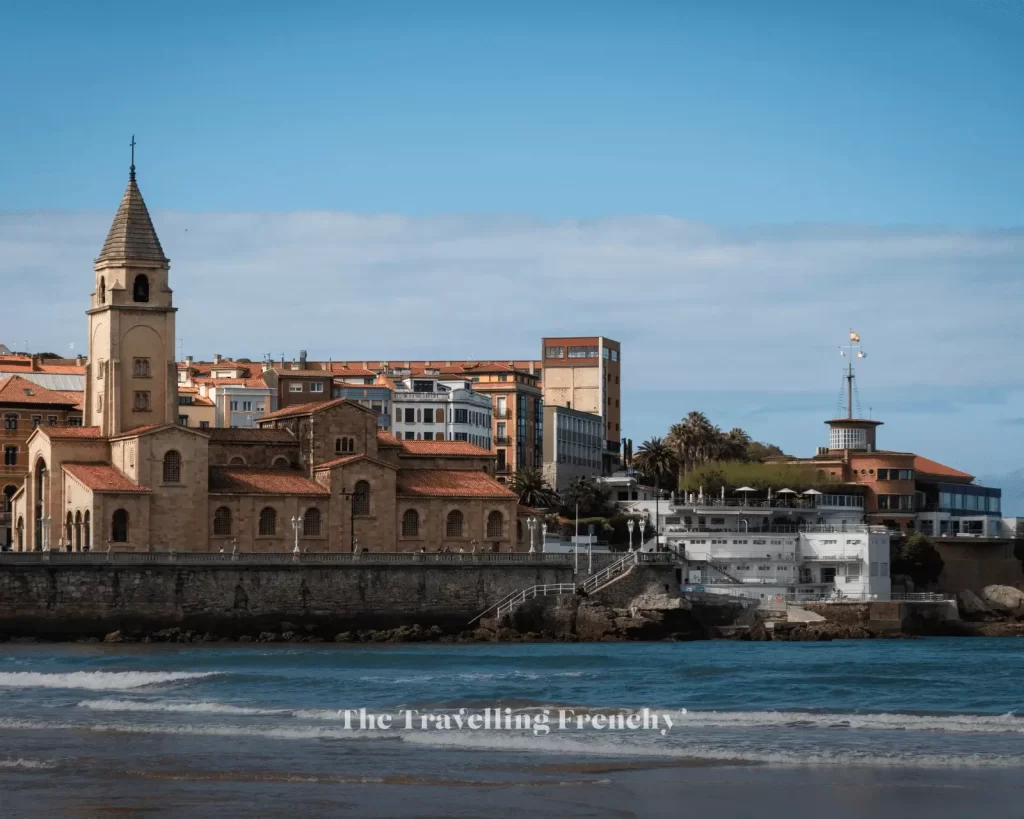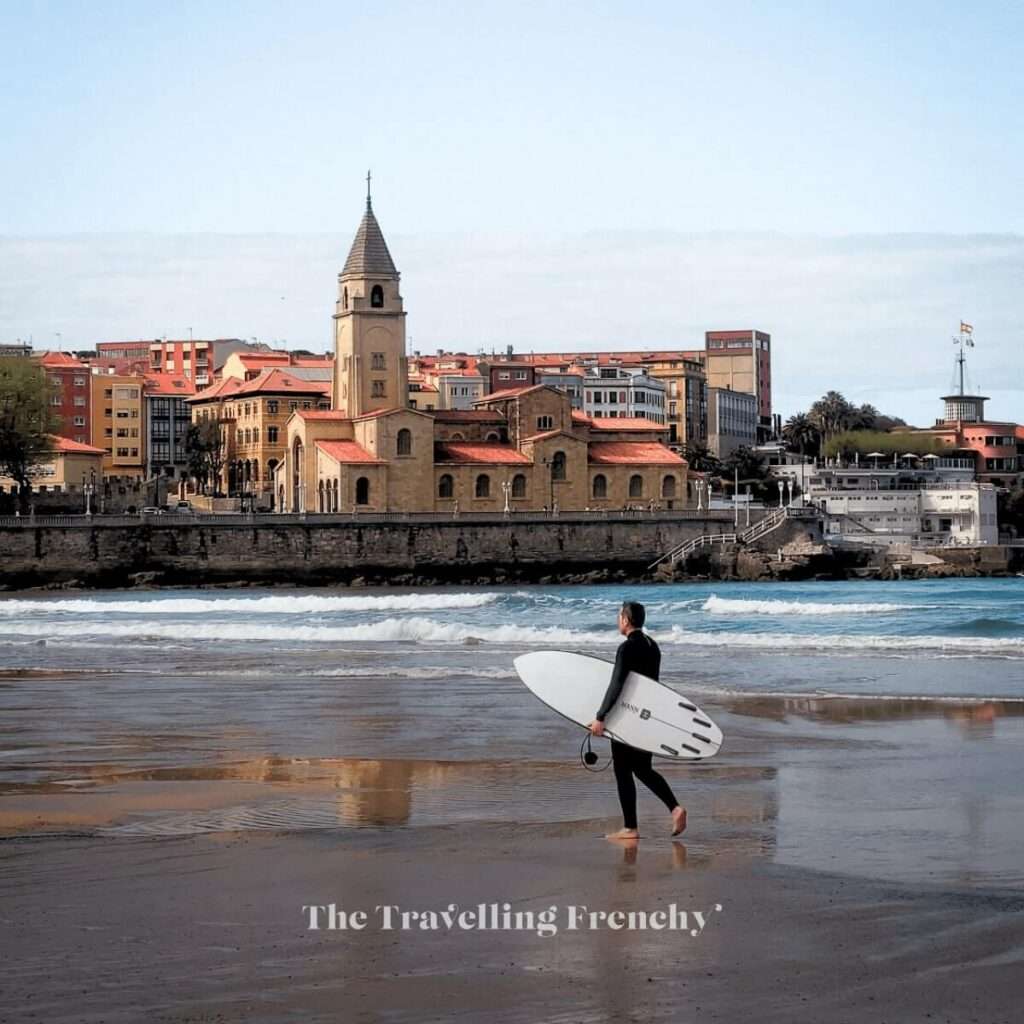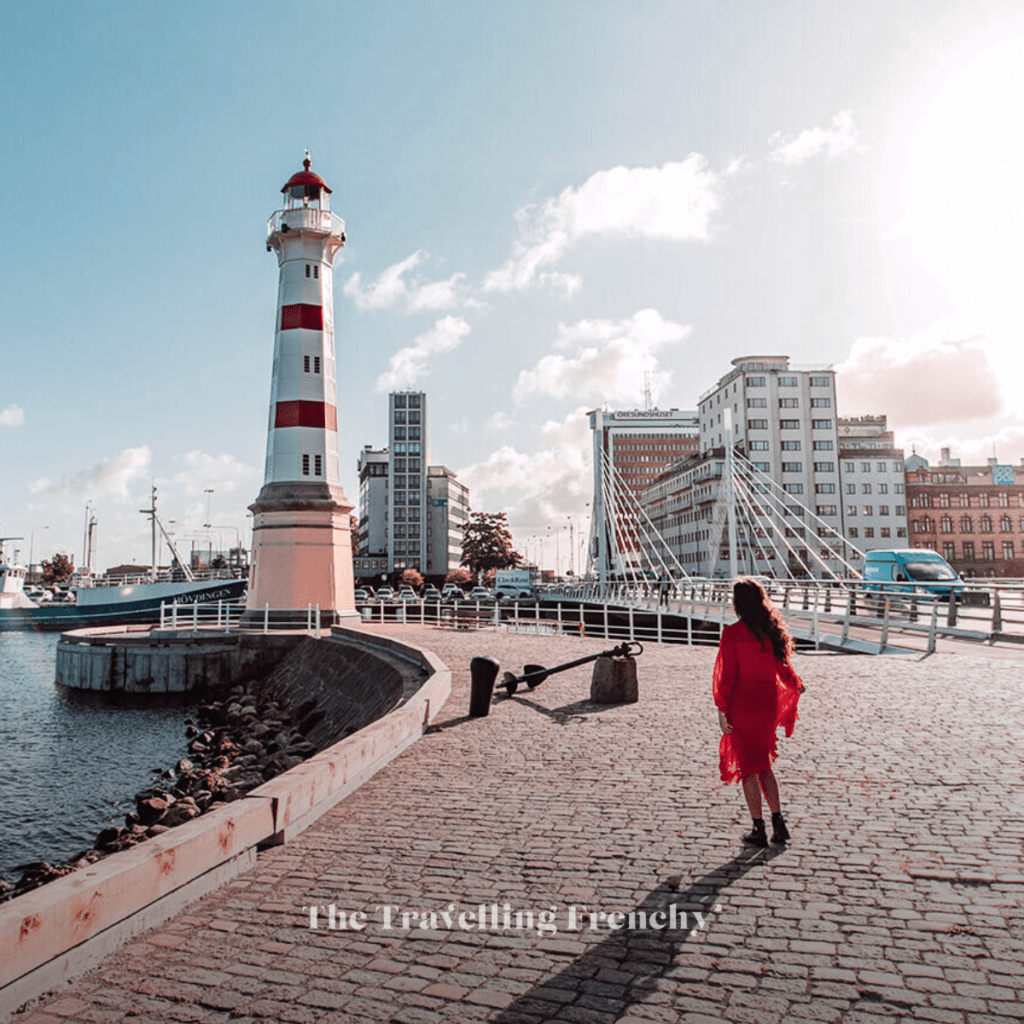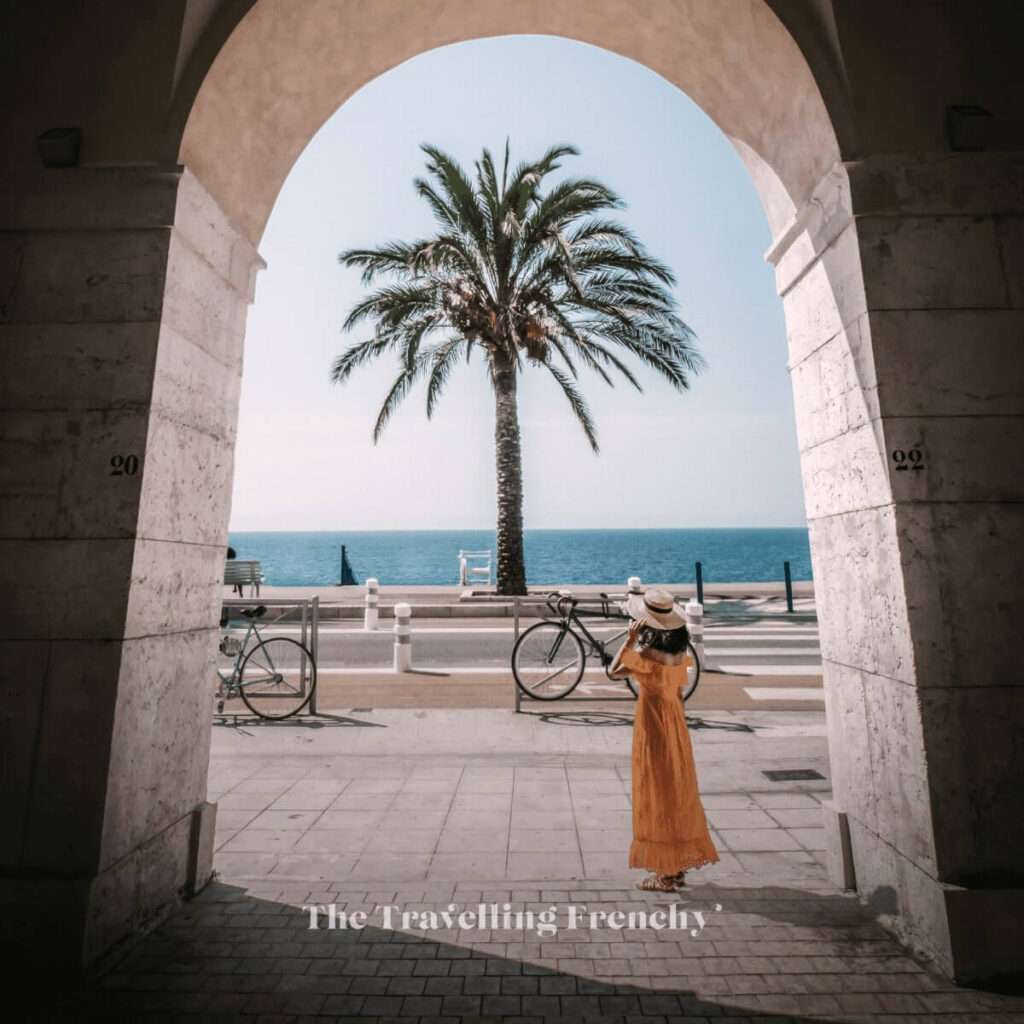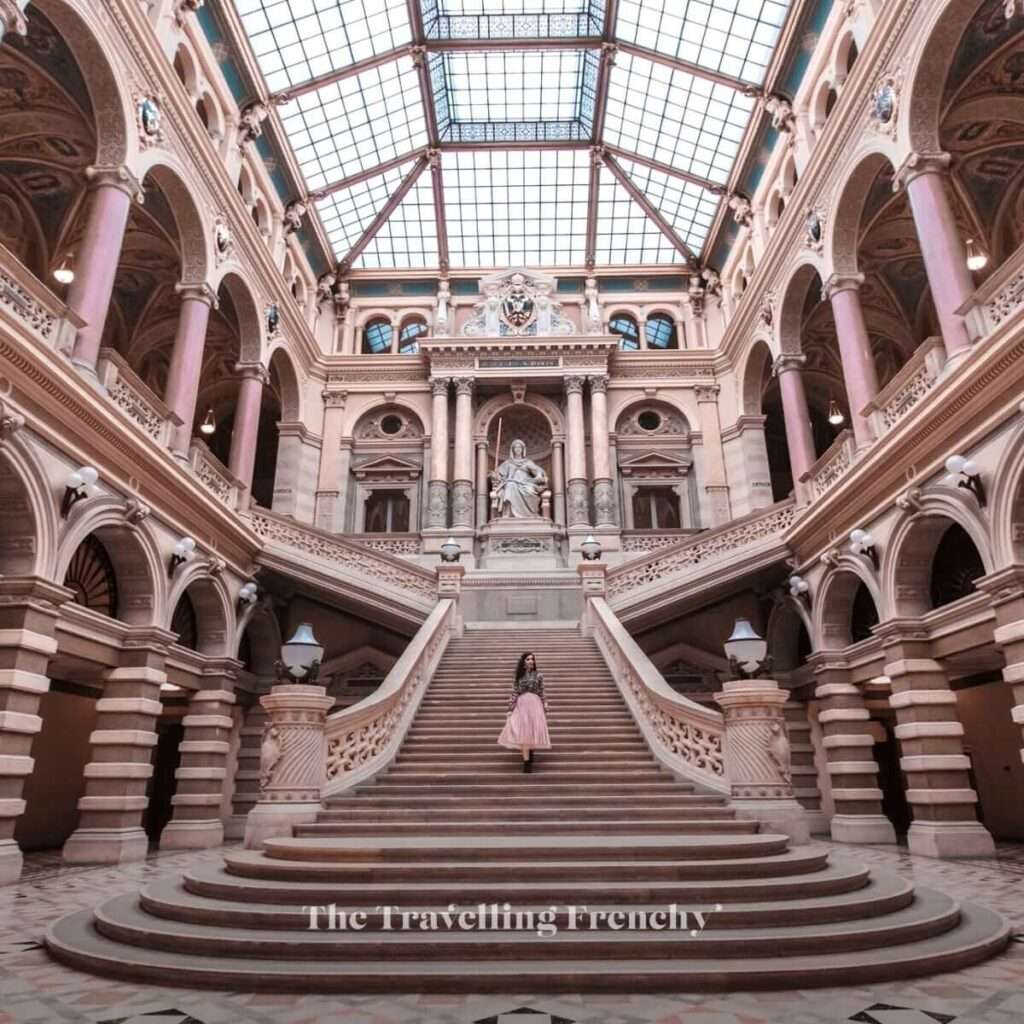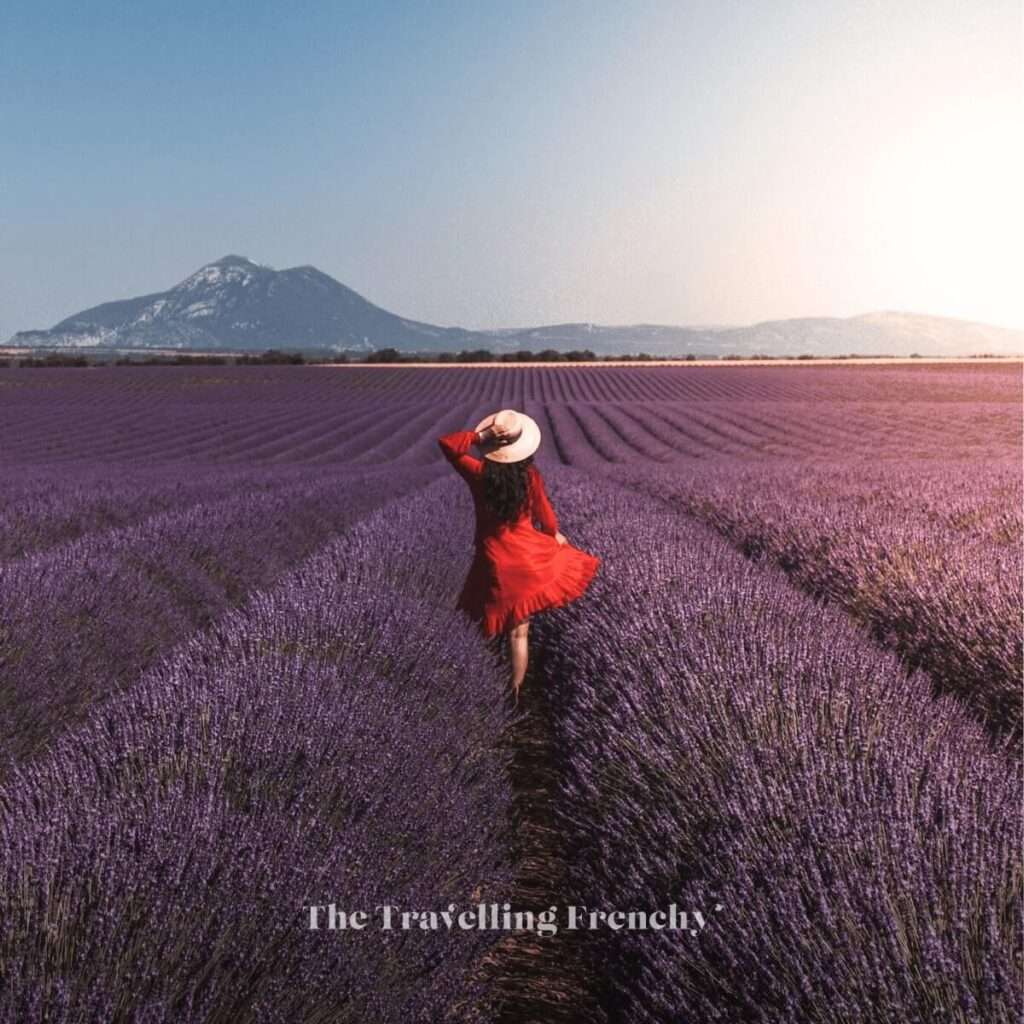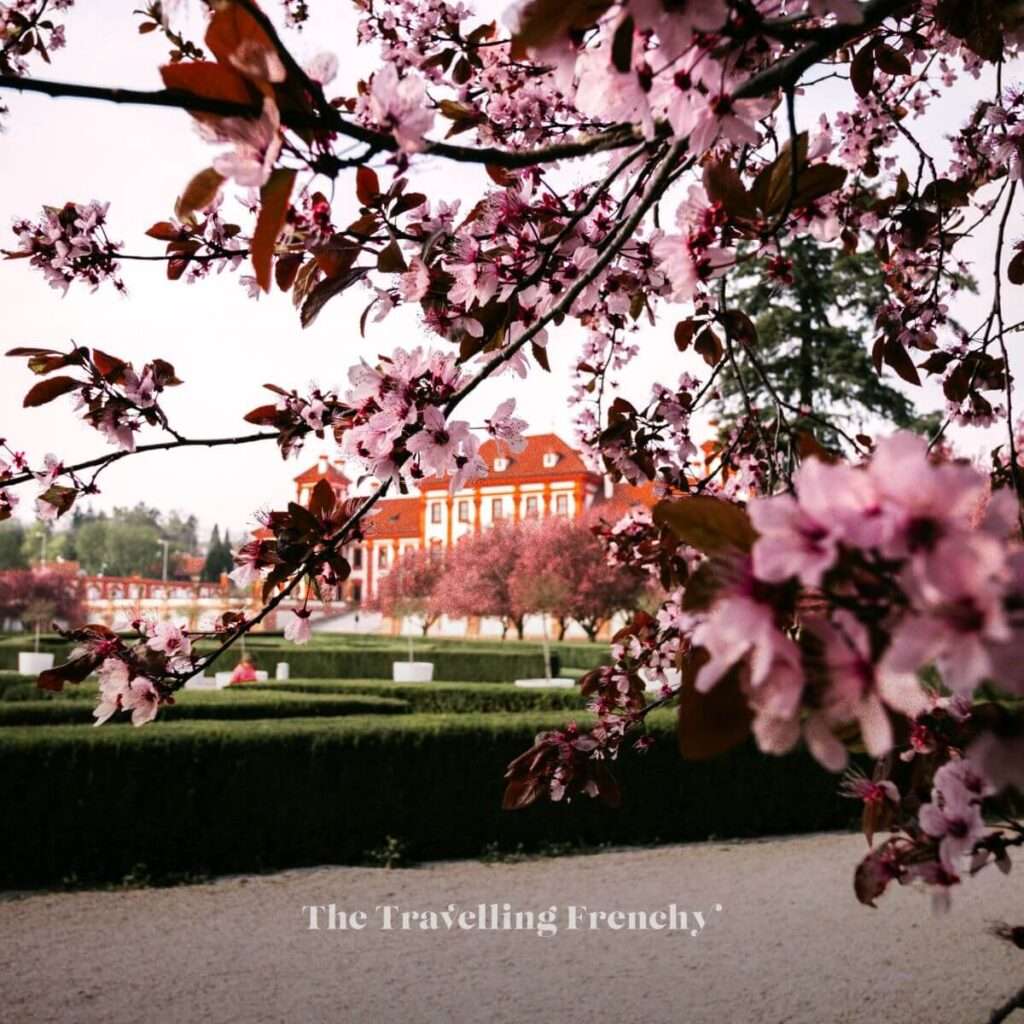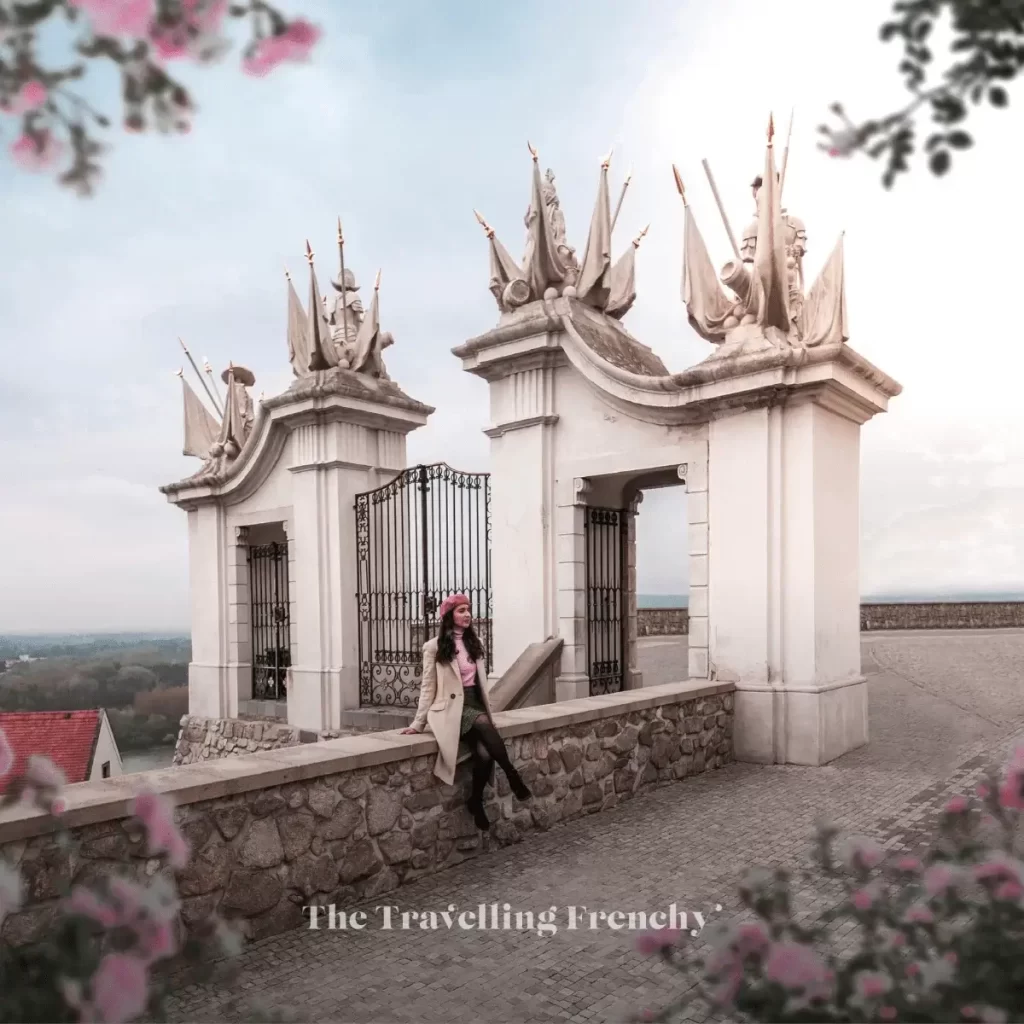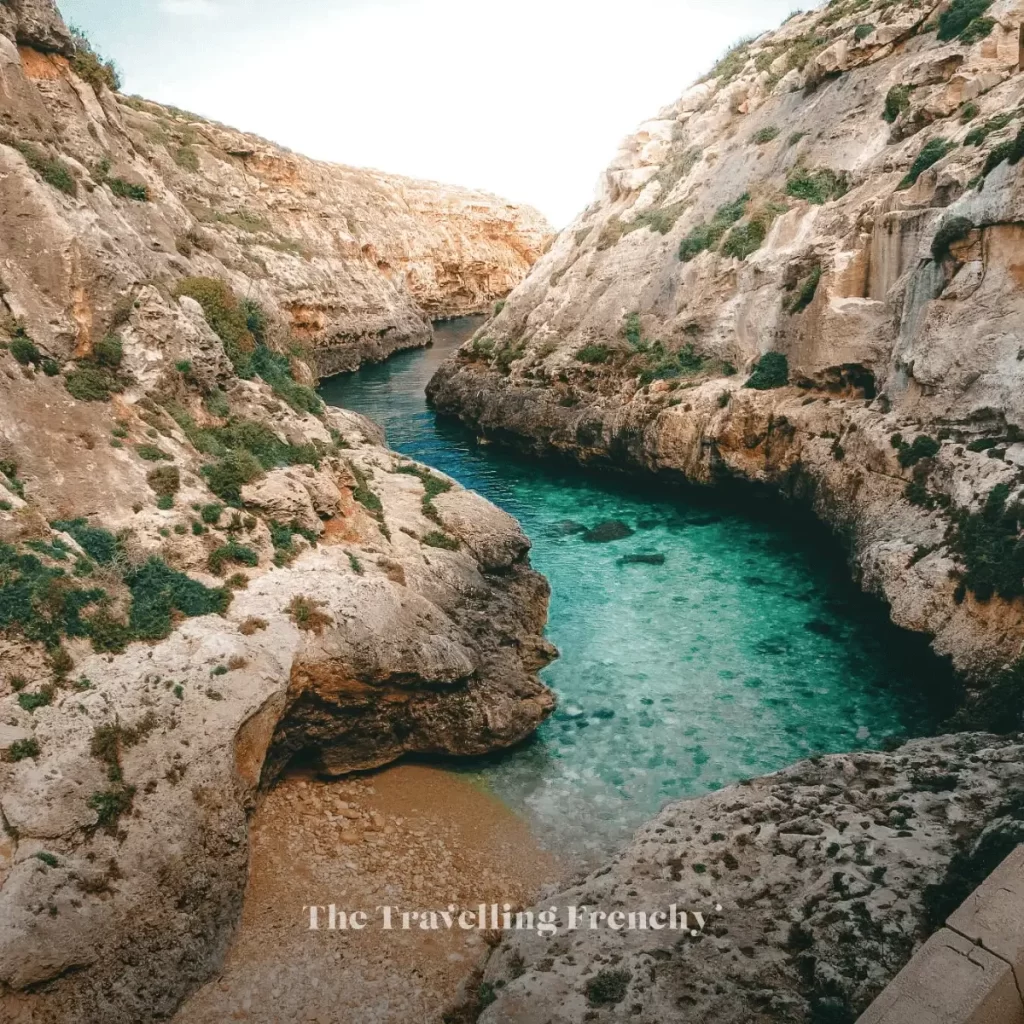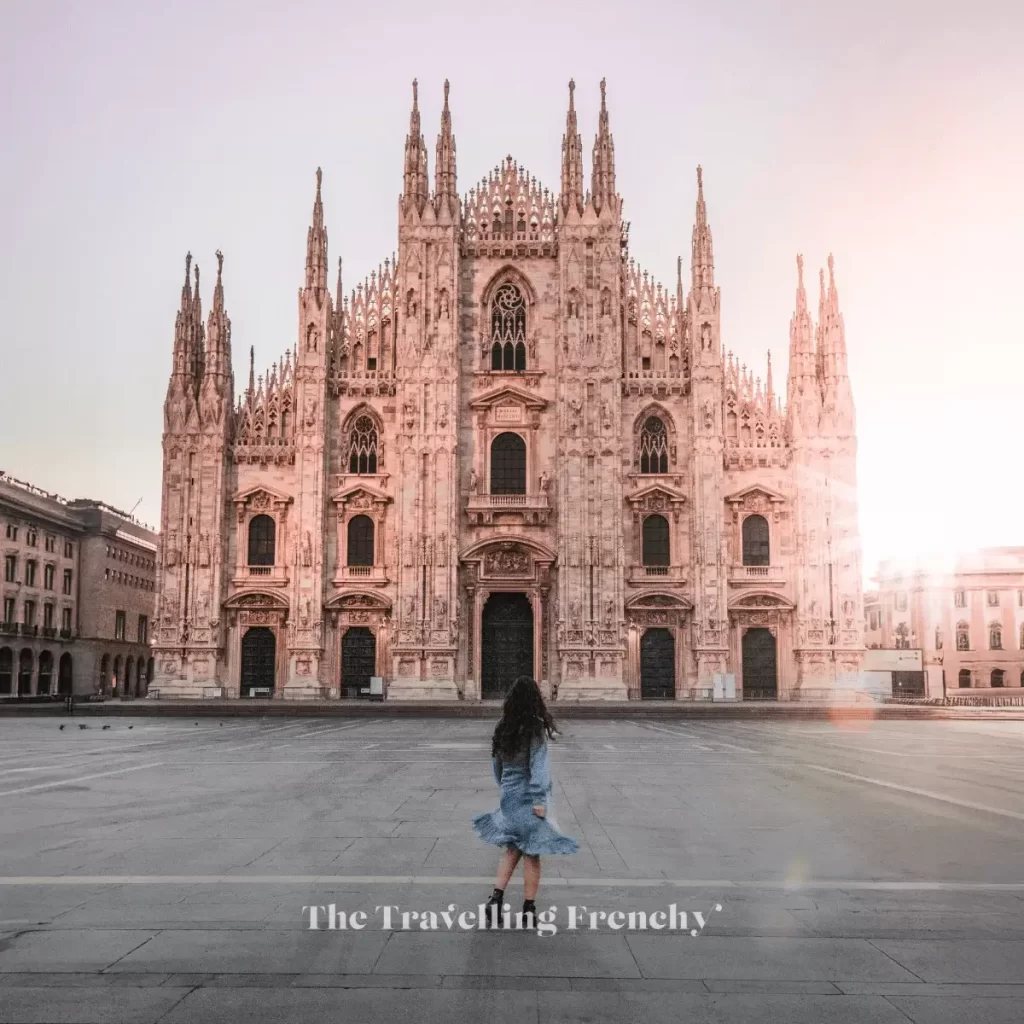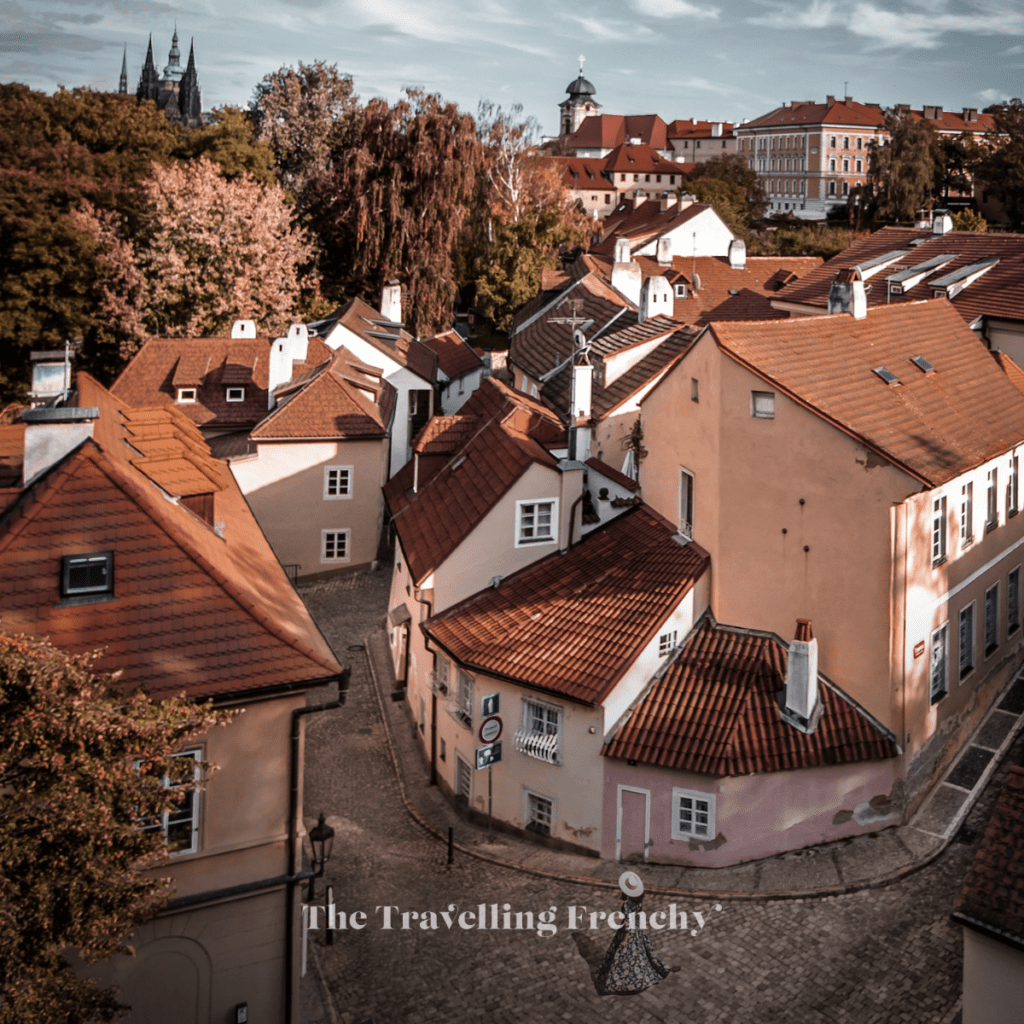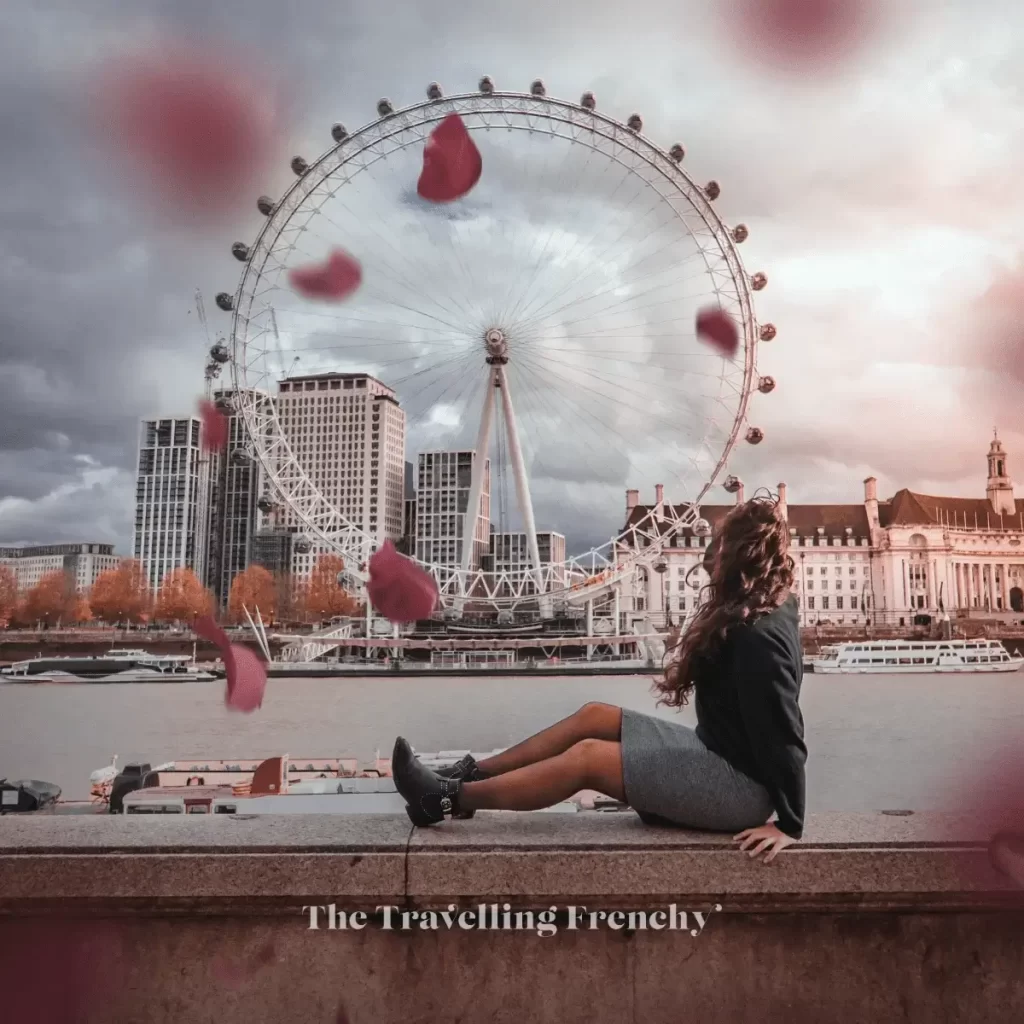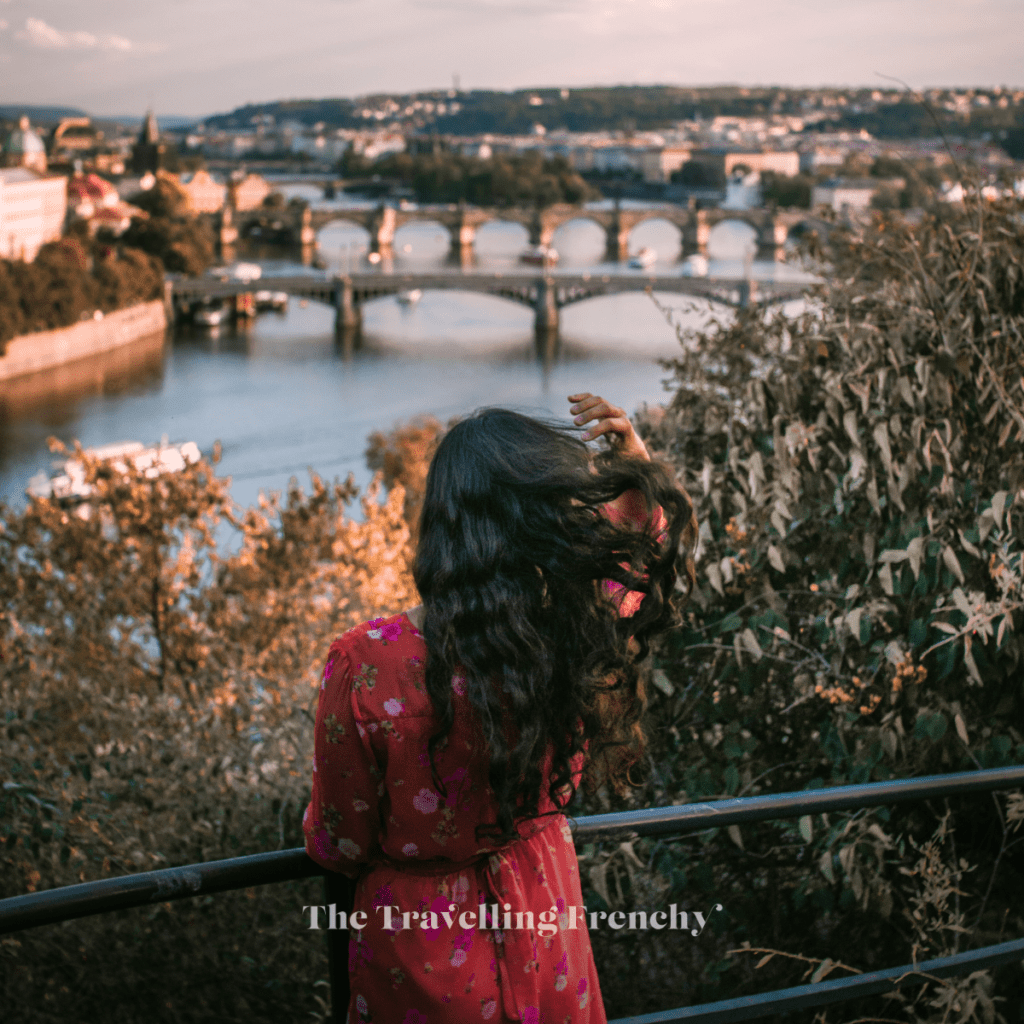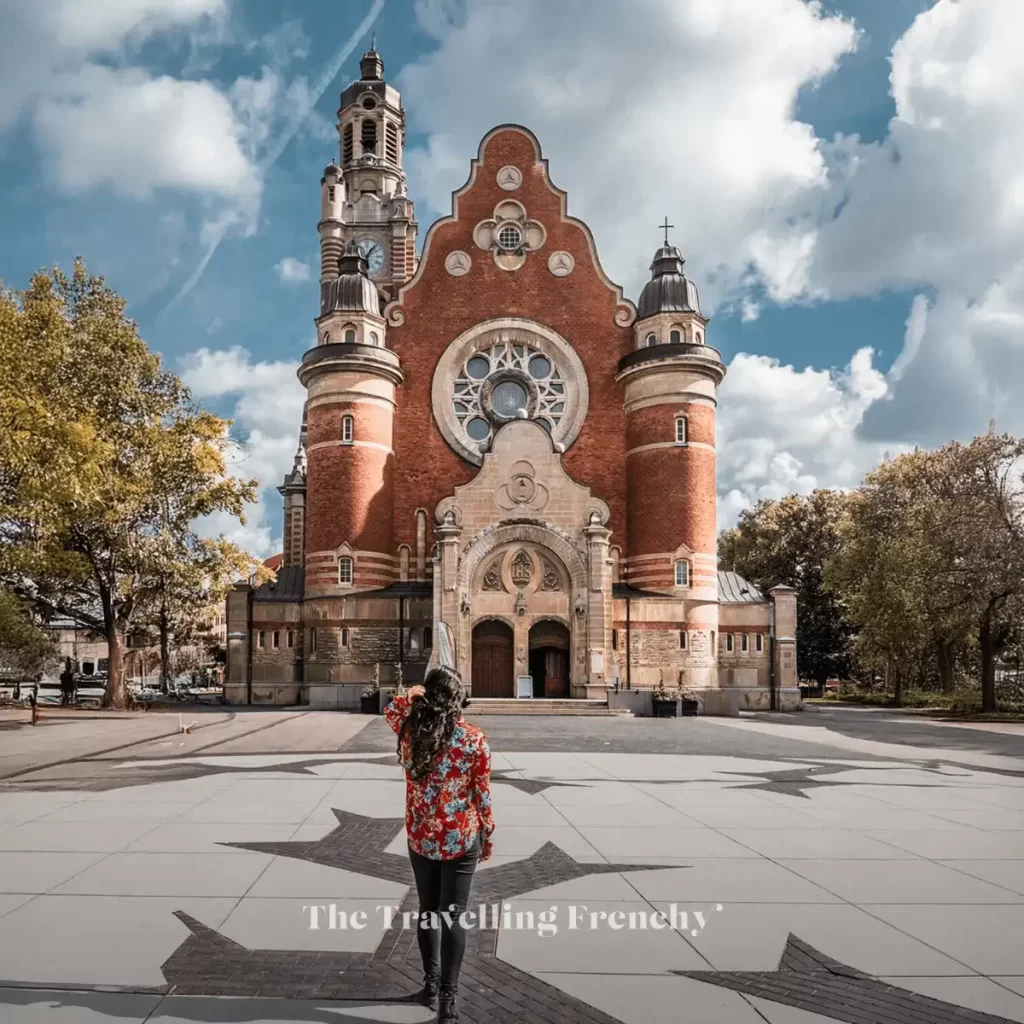Tucked between rugged green hills and the wild waves of the Cantabrian Sea, Gijón (or Xixón, in Asturian) is a city that doesn’t whisper for attention,it sings for it, with crashing surf, clinking cider glasses, and the salty scent of sea air. Located on Spain’s northern coast in the heart of Asturias, Gijón is a place where maritime tradition, working-class roots, and creative energy come together in a vibrant, deeply authentic mix.
This guide brings you the very best the city has to offer (and it perfect to use for a weekend away); experiences steeped in tradition, shaped by landscape, and alive with local flavor. Prepare to slow down, breathe deep, and fall into step with the rhythm of Gijon!
N°1. Explore the Palacio de Revillagigedo
The Palacio de Revillagigedo, a grand 18th-century Baroque palace built atop a medieval tower in Gijón’s Cimavilla, is now a vibrant International Center for Contemporary Art; featuring a stunning five-arched ground-floor gallery, twin crenellated towers, and a central patio, declared a Cultural Heritage site in 1974 and housing exhibitions, concerts, workshops, and even panoramic views accessible via its historic tower. When I went, they had a wonderful photo exhibit about the history of the city.

Travel Tip: Discover Gijón’s historic heart with a free walking tour of the Casco Histórico. Join a local guide to wander through charming narrow streets, historic plazas, and hidden corners of the old town!
N°2. Walk around Parque Isabel la Católica
The Parque Isabel la Católica in Gijón’s El Bibio neighborhood is the city’s largest green oasis, spanning over 15 hectares of landscaped gardens, lakes teeming with swans, ducks, geese, peacocks, and a controversial aviary, designed in 1941. Today the park offers walking paths, playgrounds, sculptures, and serene natural escapes by the river Piles.

Travel Tip: Unlock the best of Gijón with the Visit Gijón Card! This all-in-one digital pass grants you priority access to top attractions plus unlimited rides on the city’s urban buses for two full days.
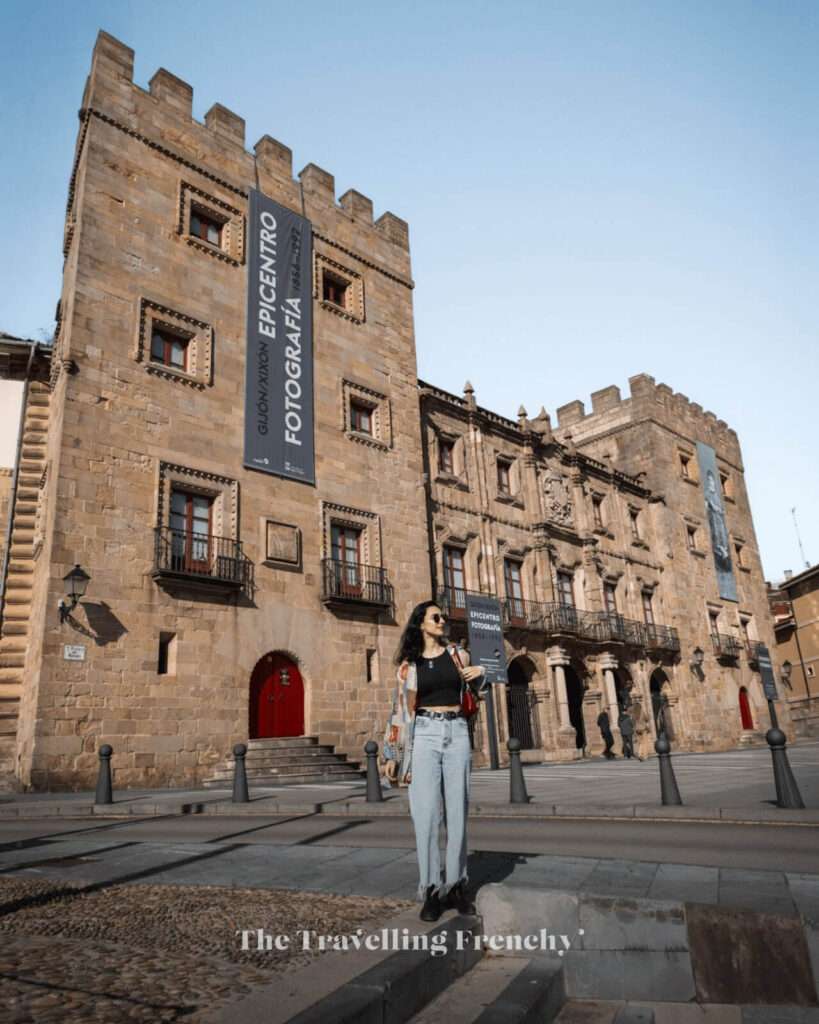
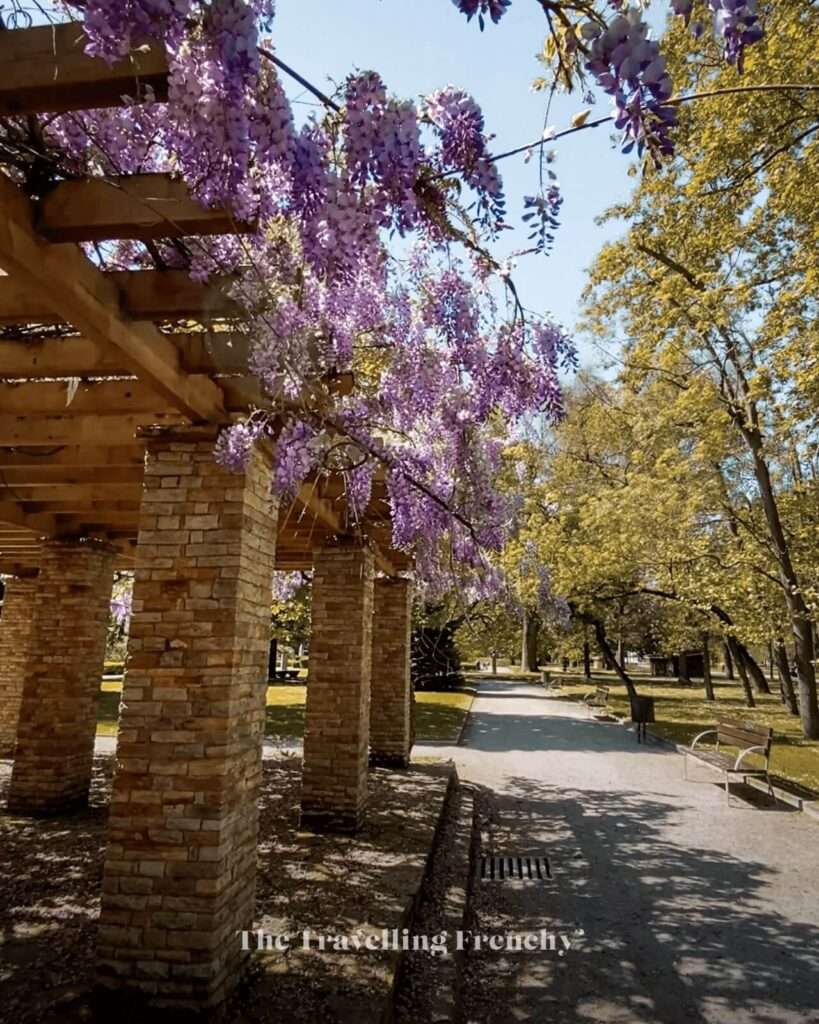
N° 3. Discover Gijón’ Cider Tradition at Casa Trabanco
Visiting a Sidrería in Asturias is a must to truly experience the local culture, and Sidrería Casa Trabanco, just outside Gijón, offers one of the best introductions to this tradition. During my visit, I enjoyed a fascinating guided tour that walked me through the cider-making process, from Asturian apple orchards to fermentation barrels. The highlight was learning and tasting the art of escanciar, the dramatic high pour that isn’t just for show: it aerates the cider, awakening its crisp, vibrant flavors. This splashy, centuries-old ritual transforms drinking cider into a shared experience, sip by sip, glass by glass!

Travel Tip: For an authentic taste of Asturias, this day trip from Gijón is a must! Explore local cider culture with a visit to the Trabanco cider house and the impressive Laboral University.
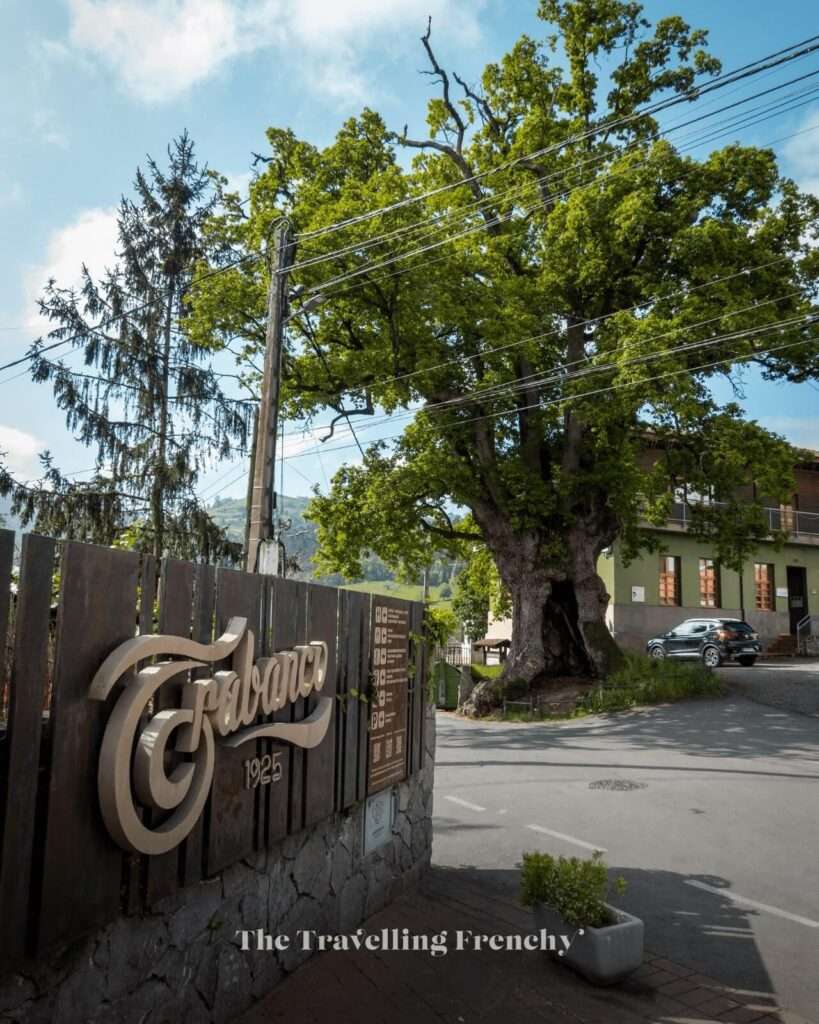
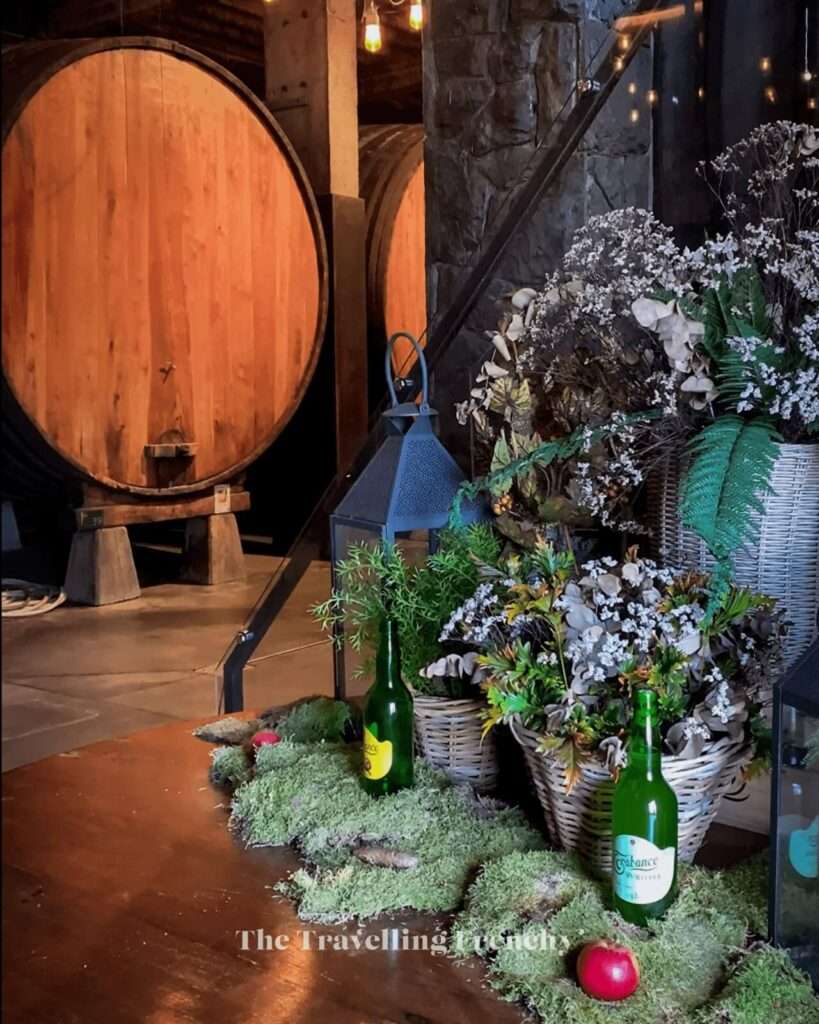
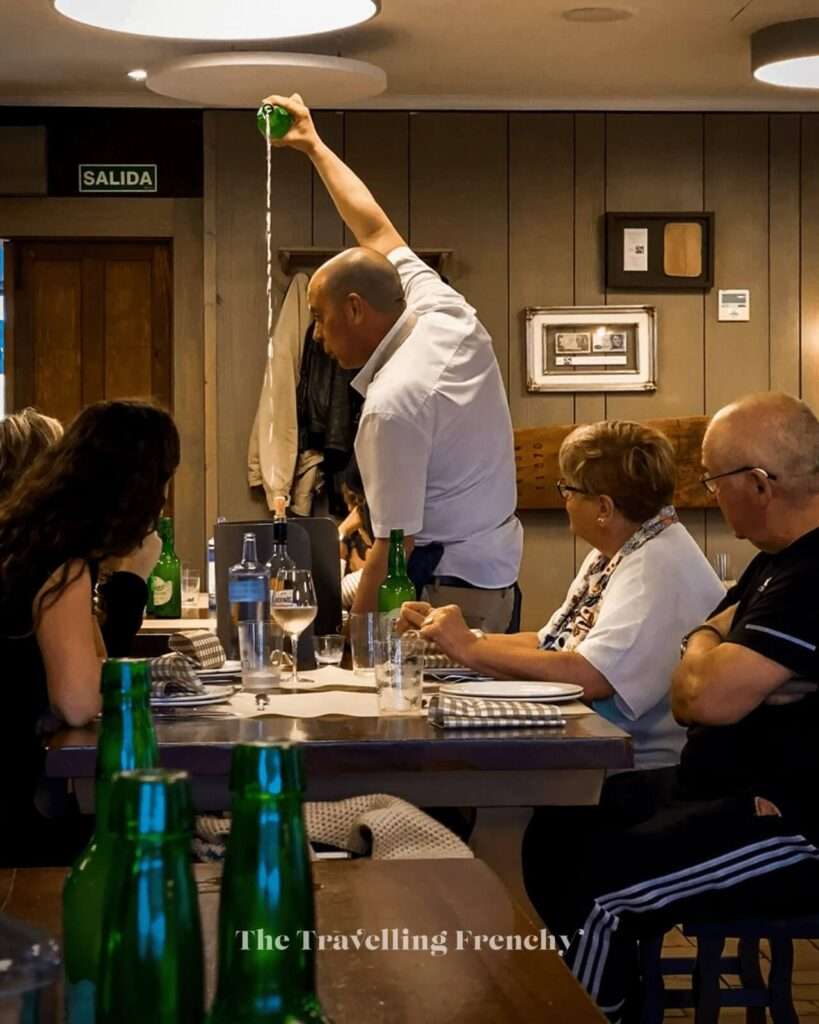

N°4. Visit the Basilica of the Sacred Heart of Jesus
The Basilica of the Sacred Heart of Jesus, known locally as La Iglesiona, is one of Gijón’s most iconic landmarks. Built between 1918 and 1922 by Gaudí disciple Joan Rubió i Bellver, this neo-Gothic masterpiece features vibrant stained glass, soaring arches, and a towering 7.75-meter Carrara marble statue of Christ that overlooks the city. The ceilings and walls are further adorned with vivid frescoes, giving the space its reputation as Asturias’s “Sistine Chapel”.

Did you know? Gripped by history, the basilica even served as a prison during the Civil War, survived near destruction, and was proclaimed a minor basilica in 2003.
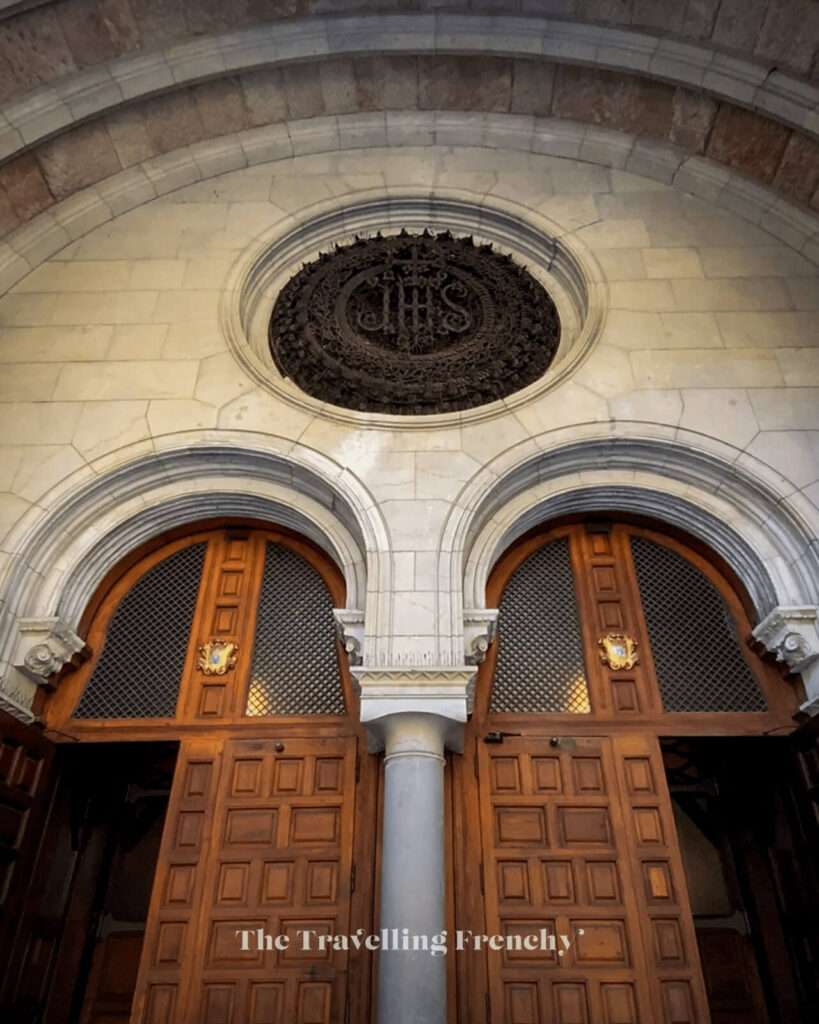
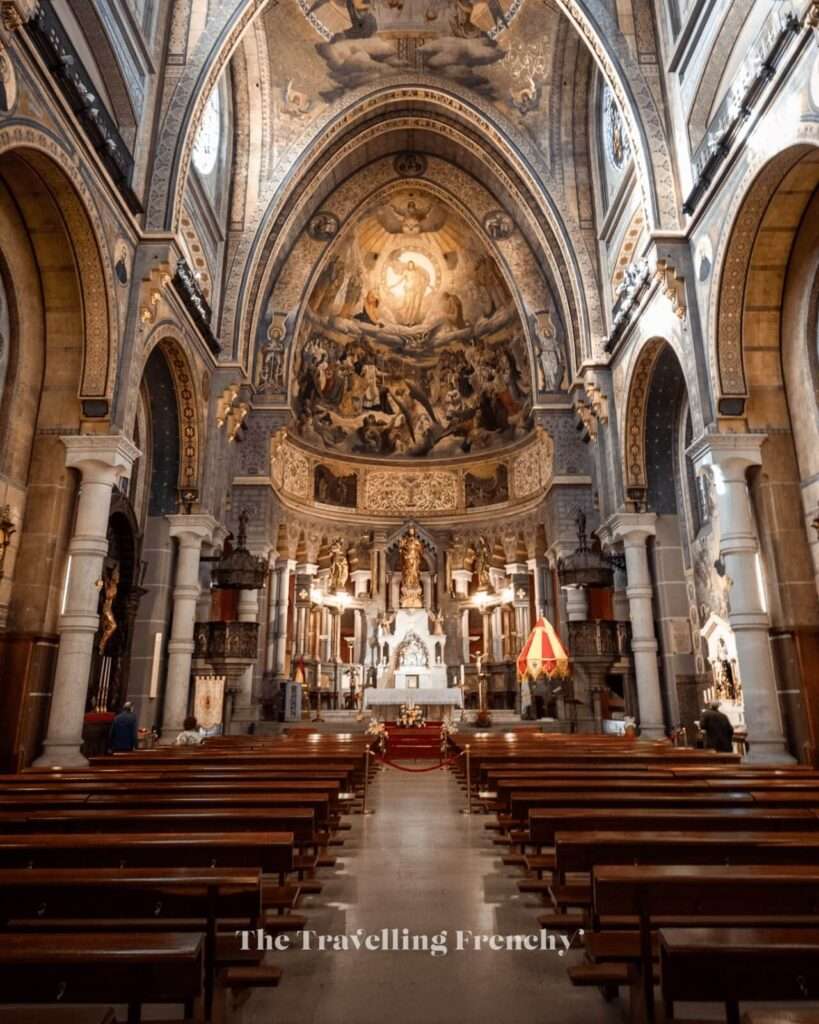
N°5. Relax at Playa de San Lorenzo
Playa de San Lorenzo is Gijón’s most iconic beach; a sweeping 1.5 km crescent of golden sand right in the heart of the city. Lined by a lively promenade known as El Muro, it’s a favorite for both locals and visitors, offering space to surf, swim, sunbathe, or enjoy a leisurely stroll along the Cantabrian Sea. With surf schools, beach volleyball courts, and nearby cafés, it’s a perfect blend of city life and seaside escape.

Travel Tip: Explore Gijónfrom the comfort of your home with immersive virtual tours! Discover the beauty of Parque Isabel La Católica and more; all at your own pace.
N°6. Check out Plaza Mayor
The Plaza Mayor is Gijon’s bustling historic square, surrounded by elegant arcaded buildings, lined with cafés, sidrerías, and boutiques, and hosting vibrant markets, concerts, and festivals year-round, making it the perfect spot to soak up local life in the heart of Cimavilla!

Travel Tip: From Gijón, explore the breathtaking Covadonga Lakes, Sanctuary, and charming villages on a full-day guided tour through Asturias’ stunning landscapes and rich history.
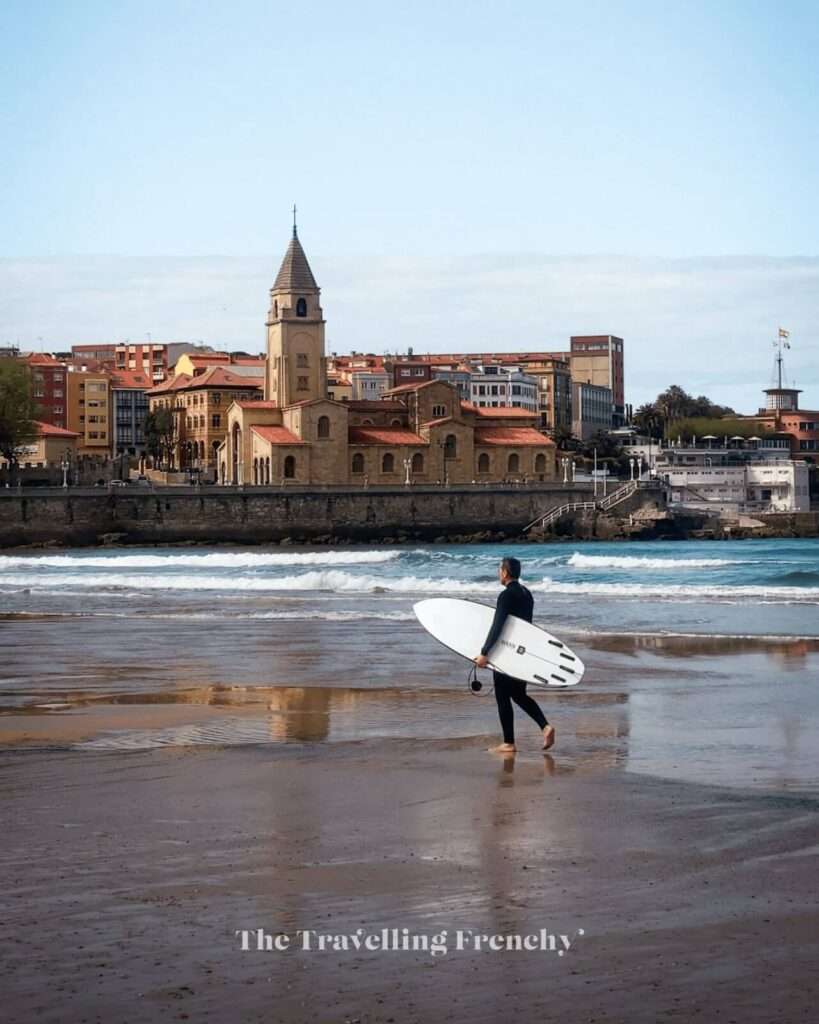
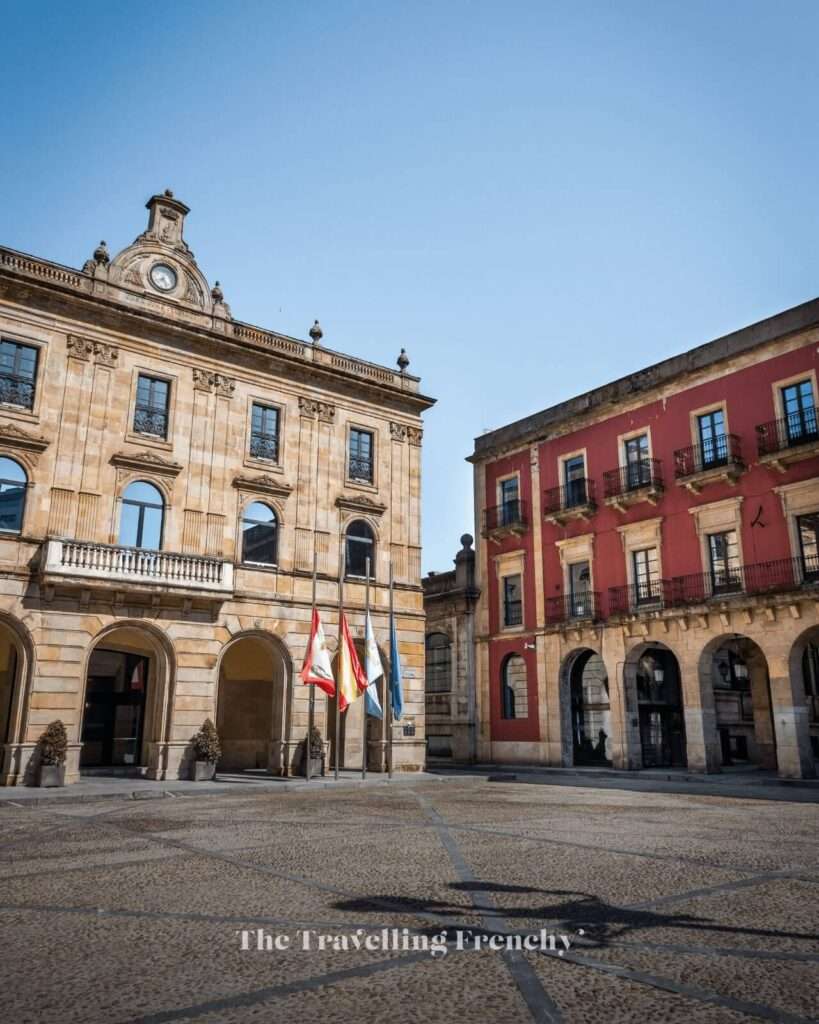
N° 7. Wander around Cimavilla
Wandering around Cimavilla, Gijón’s charming old quarter, is like stepping into a lively open-air museum where history meets the sea. As you stroll its narrow streets, you’ll find hidden treasures like the Cala La Cantábrica viewpoint, a peaceful coastal spot offering breathtaking panoramic views of the Cantabrian Sea. Just a short walk away, don’t miss snapping a picture at the colorful Gijon sign and the nearby Cider Tree, a stunning sculpture made from 3,200 recycled cider bottles! A shimmering tribute to Asturias’ cider culture and a powerful symbol of sustainability.

Photo Tip: Find the whimsical dragon sculpture perched on a historic wall in the Cimavilla neighborhood, adding a touch of fantasy to the city’s oldest district.
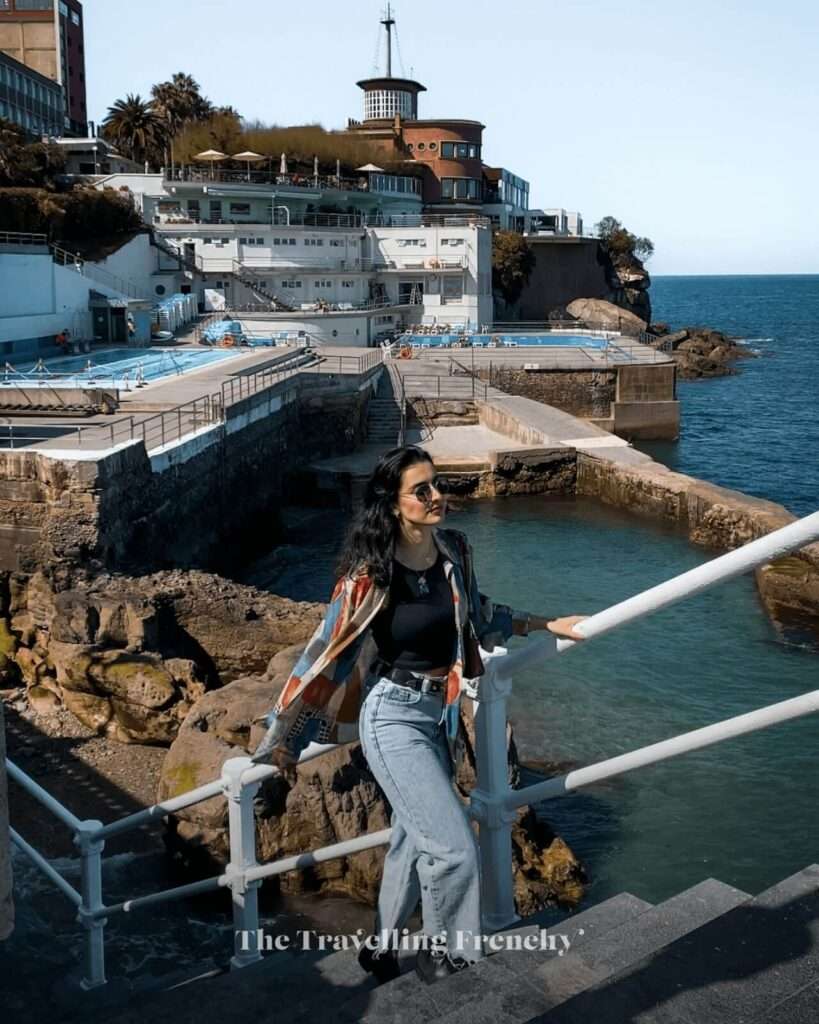
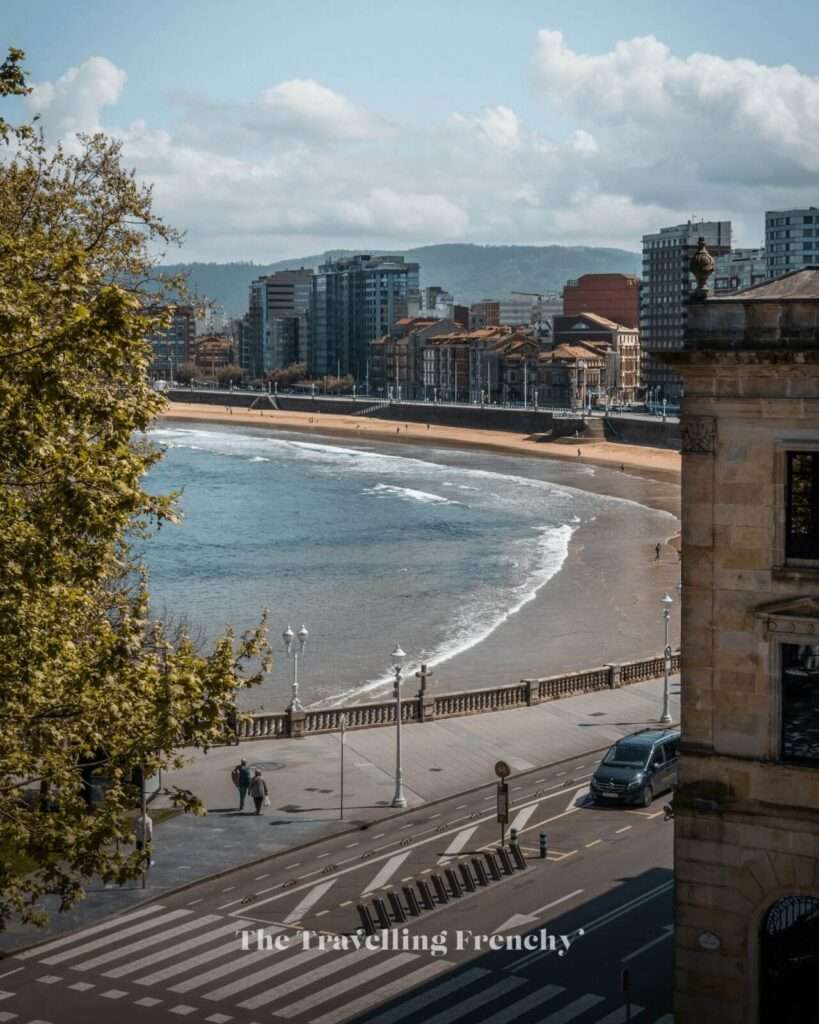
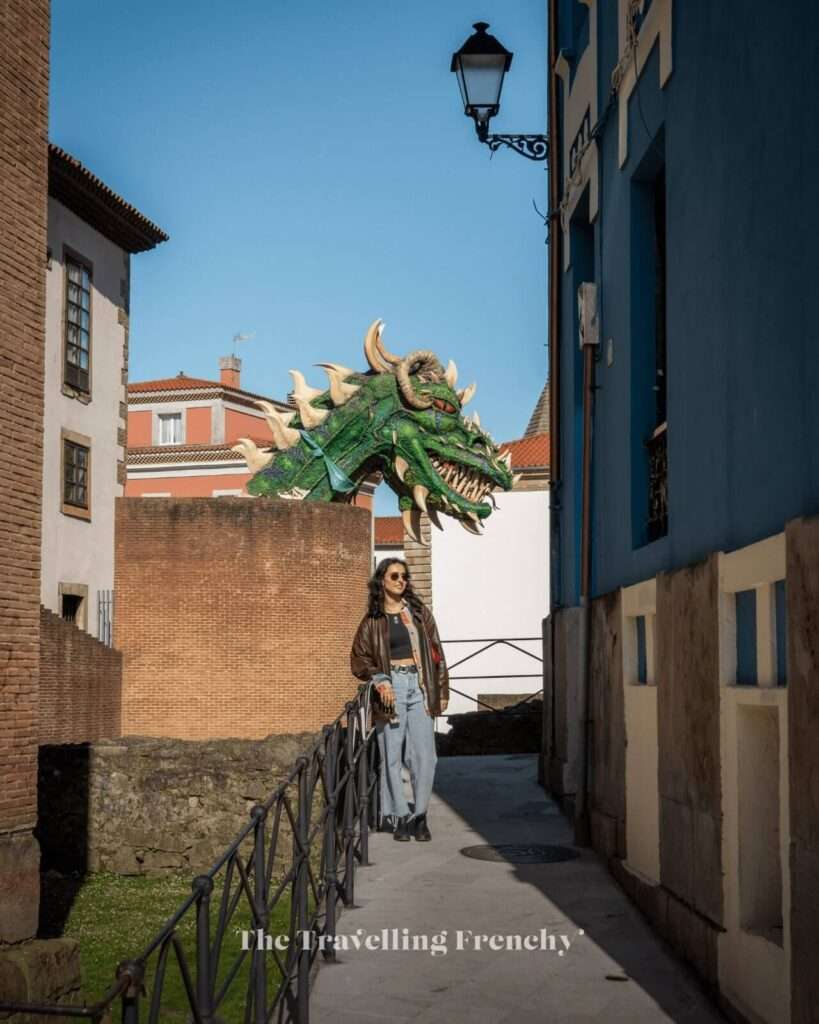
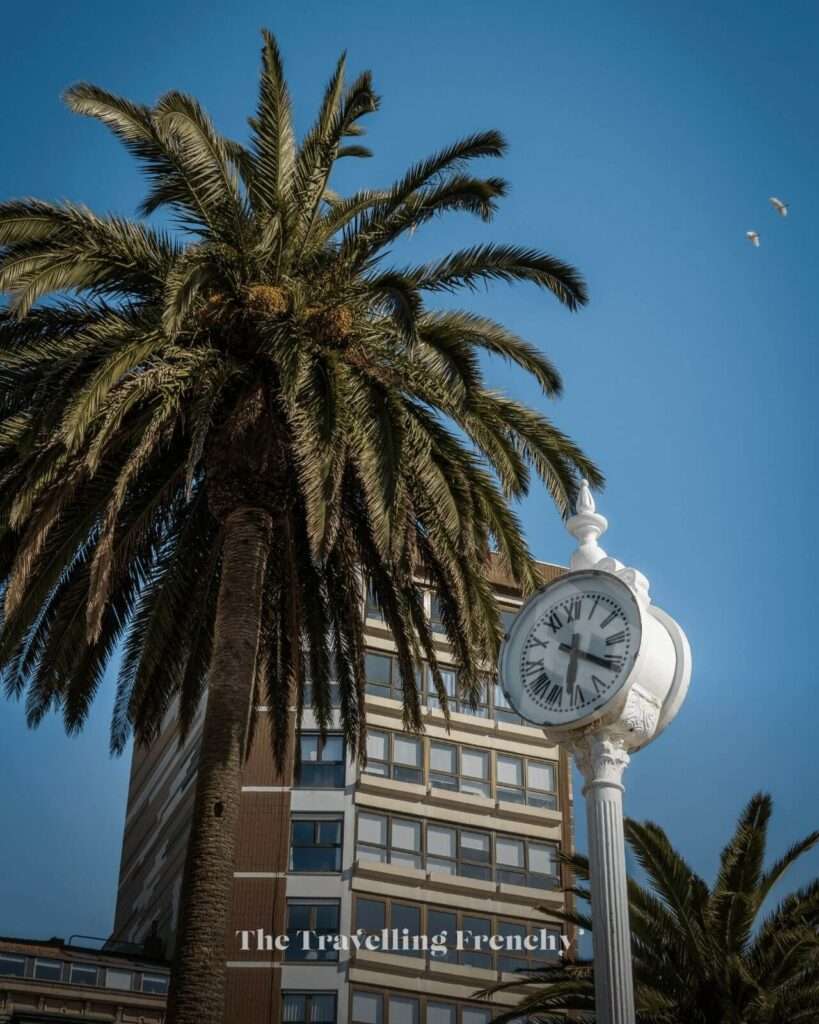
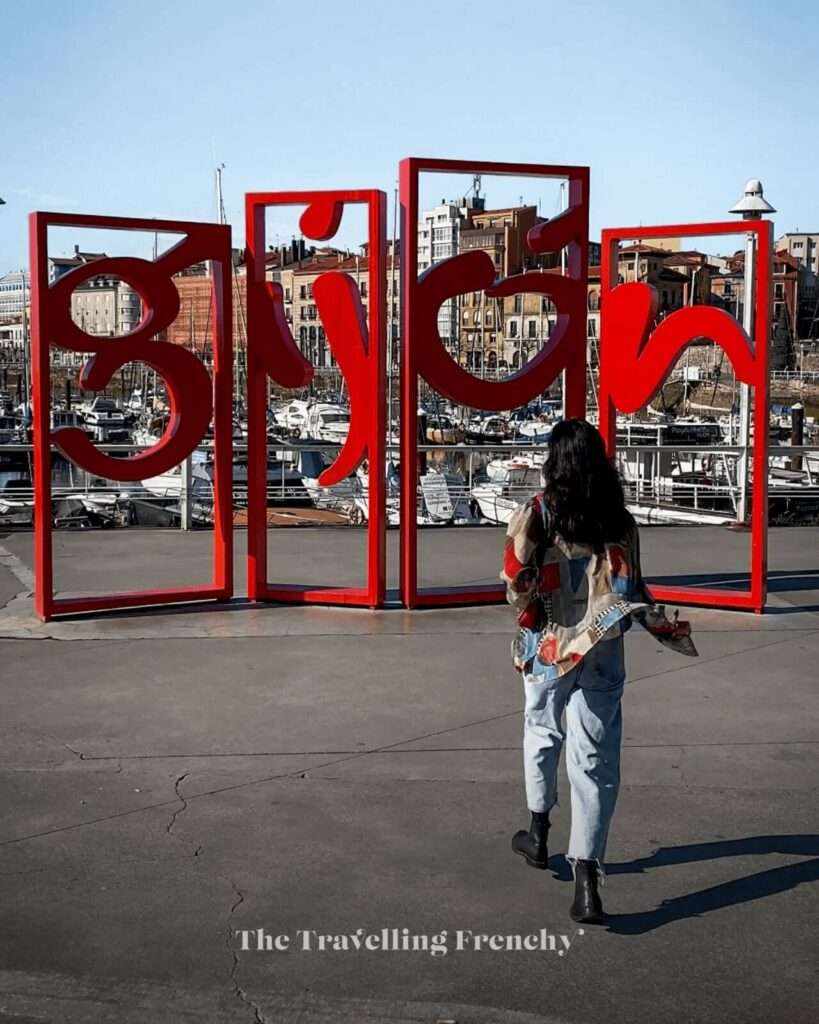
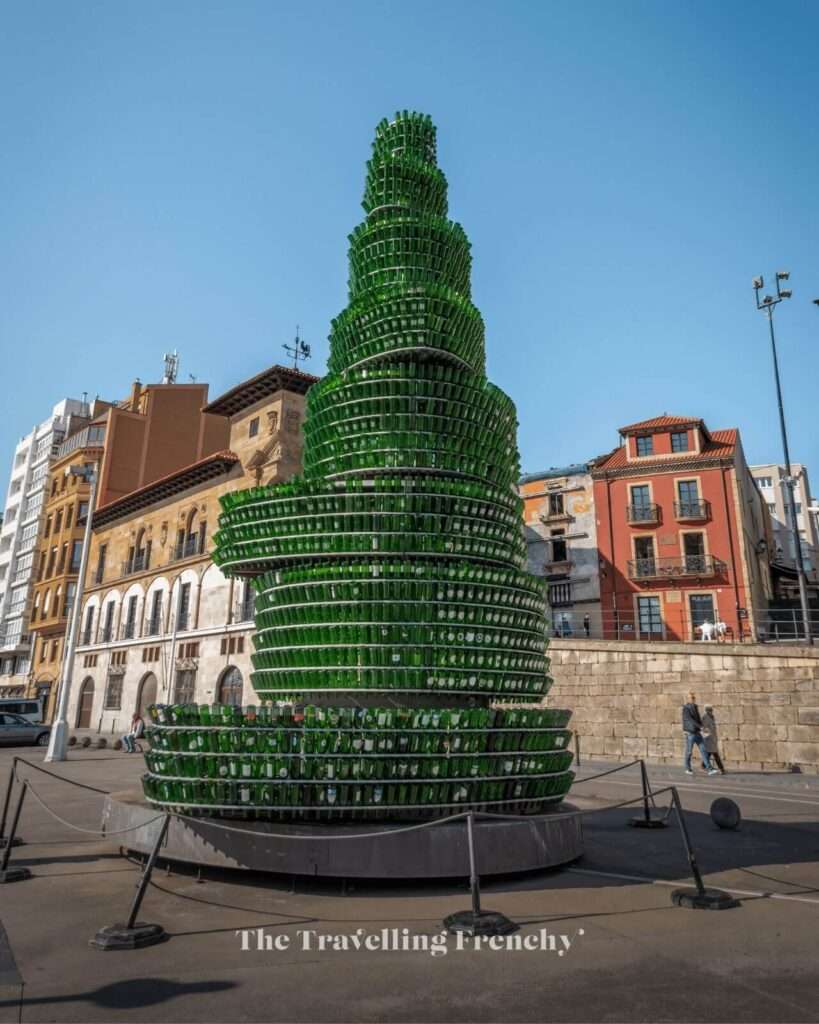
N°8. Hike up Cerro de Santa Catalina
The Cerro de Santa Catalina is a historic clifftop park in Cimavilla crowned by Eduardo Chillida’s iconic concrete sculpture Elogio del Horizonte. Offering one of the best panoramic viewpoints over Gijón’s bay and coast, this elevated green space also features restored ancient fortifications, a skatepark, children’s area, and outdoor auditorium; making it both a scenic lookout and vibrant community hub.

Travel Tip: stand in the center of the sculpture and you’ll hear an eerie, amplified echo of the waves and wind. Chillida designed it to interact with the sound of the sea!
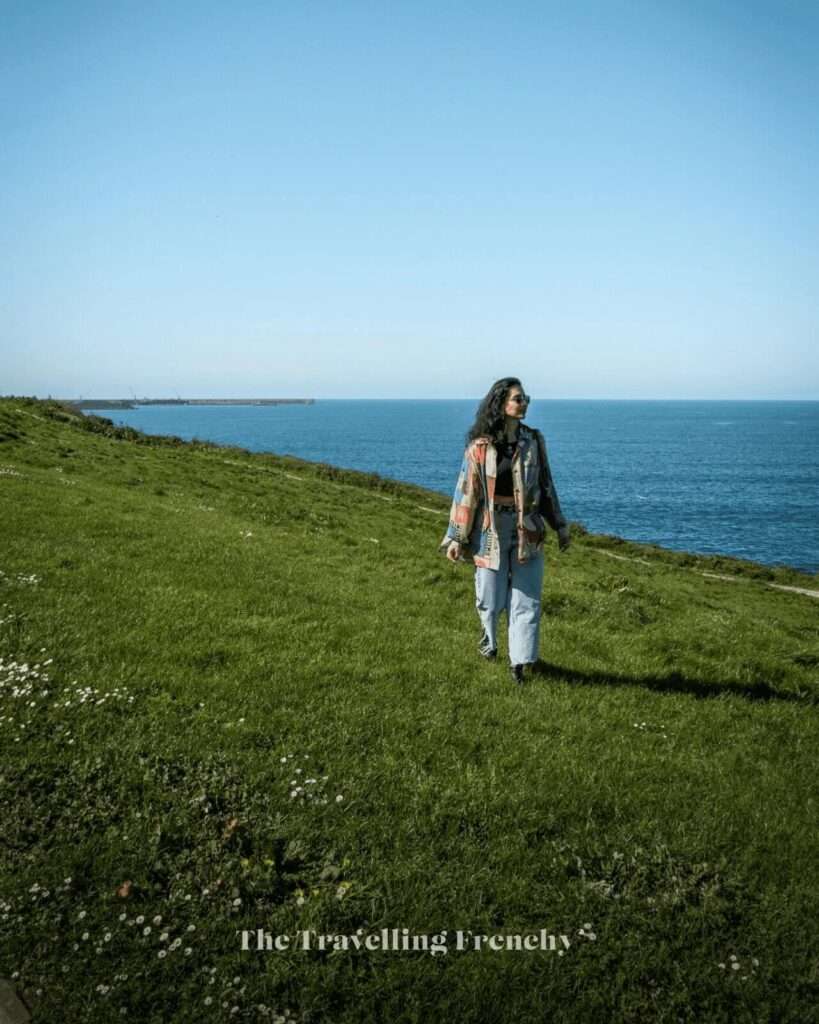
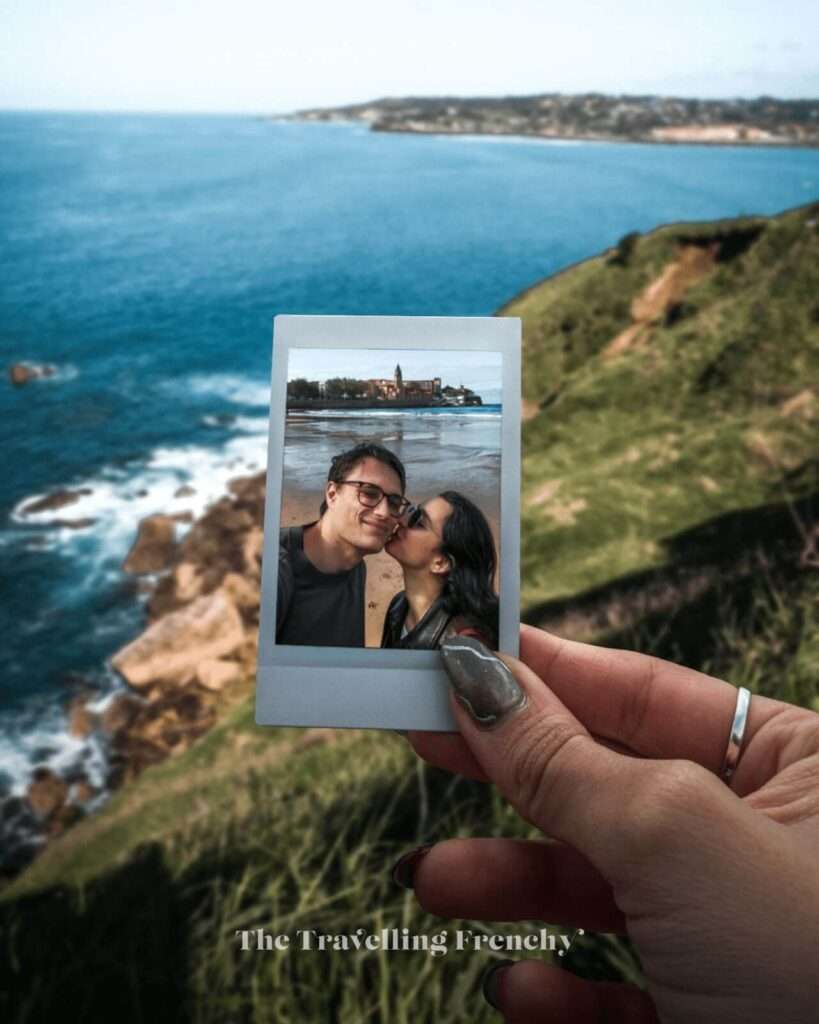
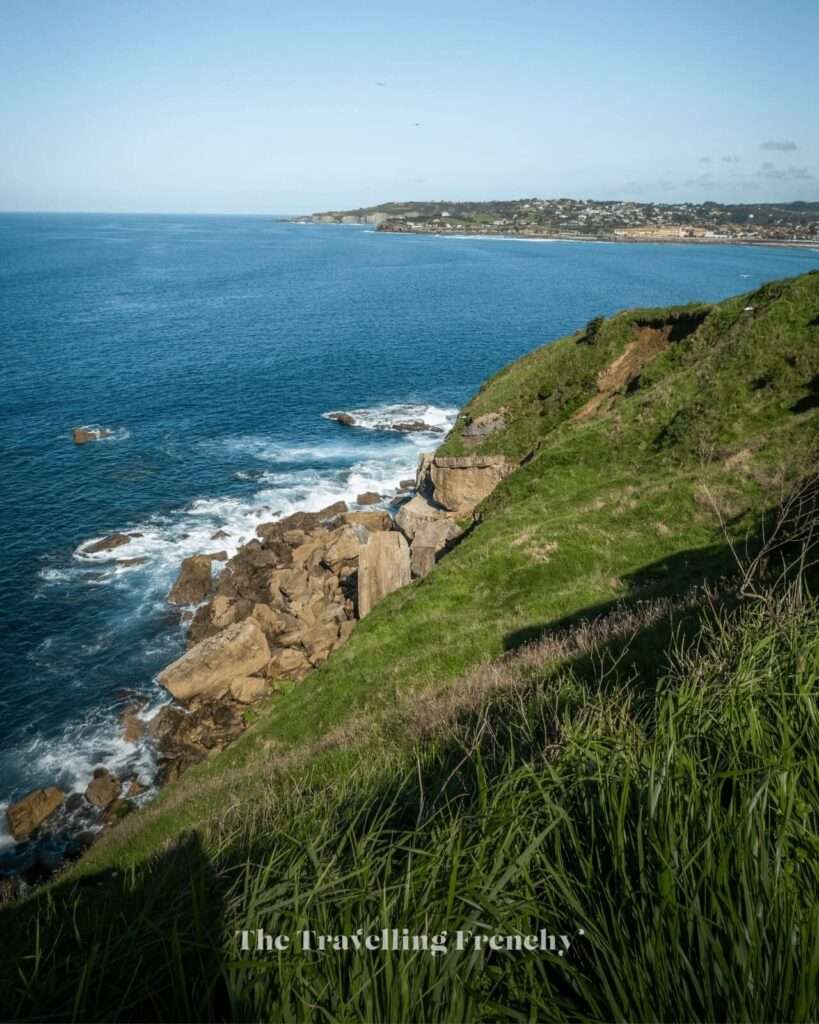
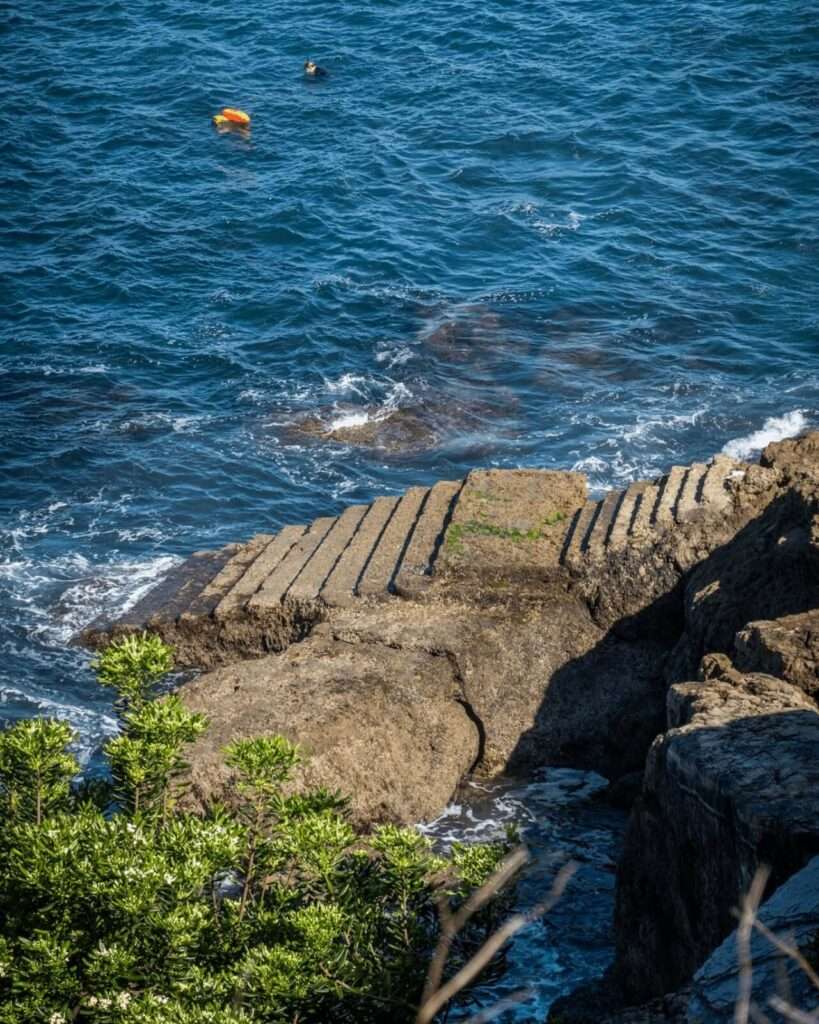
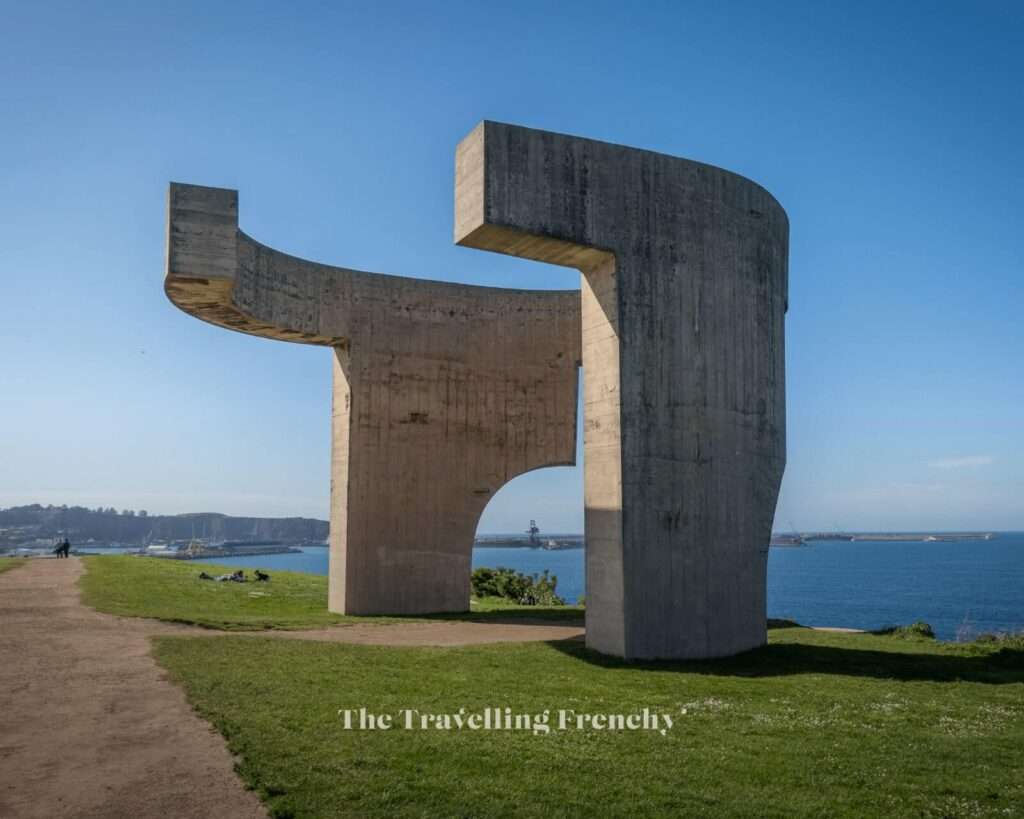
N°9. Try local delicacies
Gijón’s culinary scene is a delightful journey through traditional Asturian flavors, offering a rich tapestry of dishes that reflect the region’s maritime heritage and agricultural abundance.
Seafood Delights
Dishes like tiñosu and golondru (scorpion fish and gurnard respectively), pixín con bugre (monkfish with lobster) and chopa (sea bream) showcase the region’s maritime bounty. Squid and octopus are also popular choices. But the shellfish that best represent Gijon are llámpares (limpets), oricios (sea urchins) and navajas (razor clams).
Cider-Inspired Cuisine
The city’s traditional cider houses, known as chigres, serve dishes like chorizo a la sidra (chorizo cooked in cider) and merluza a la sidra. Asturias is also a heaven for cheese lovers!
Hearty Stews and Meats
Fabada asturiana, a rich bean stew with chorizo, blood sausage, and bacon, is a regional classic. Pote asturiano, a hearty stew with beans, cabbage, and various meats, is another comforting dish.
Sweet Treats
Gijón is also famous for its love of pastries, boasting one of Spain’s highest patisserie-to-inhabitant ratios. Highlights include rich Asturian rice pudding, sweet pastries like charlota, frixuelos, and casadielles filled with nuts and aniseed, plus the popular Tarta Gijonesa; a sponge cake with nougat cream.
For an authentic culinary experience, explore the city’s many chigres and restaurants, where you can savor these traditional dishes and immerse yourself in Gijon’s rich gastronomic culture!

Food Tip: Try Gijón Goloso! A fun self-guided tour that lets you sample up to 14 different pastries and ice creams from the city’s best spots.
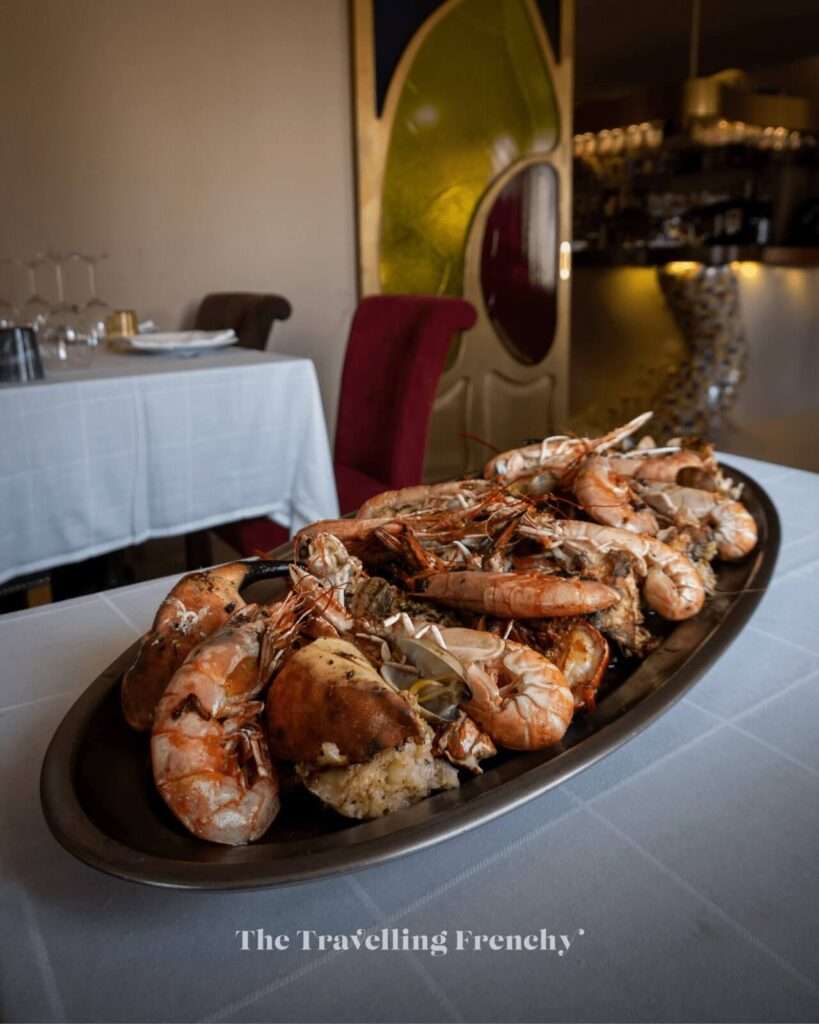
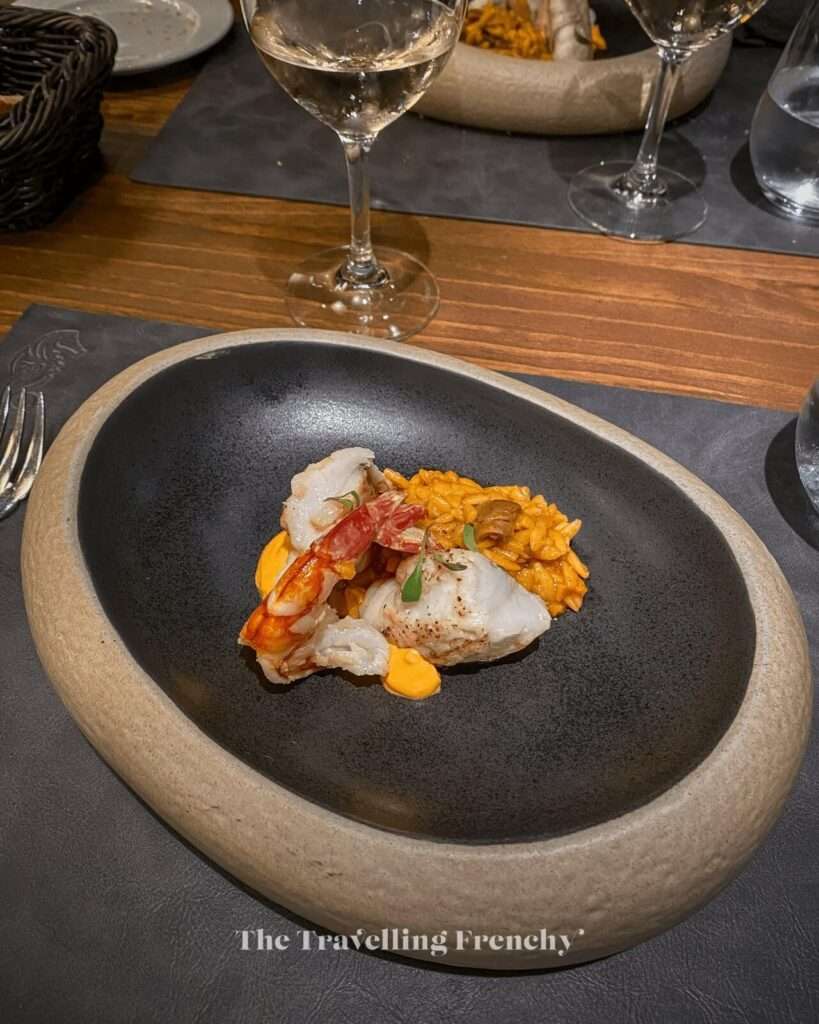
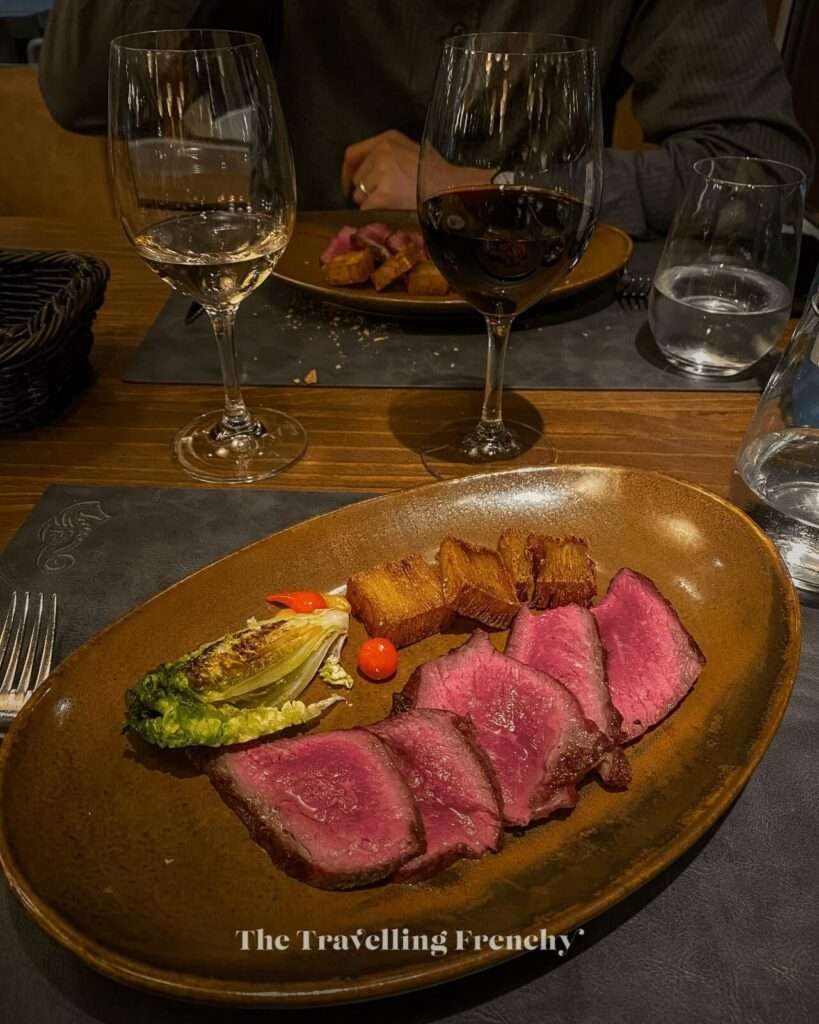
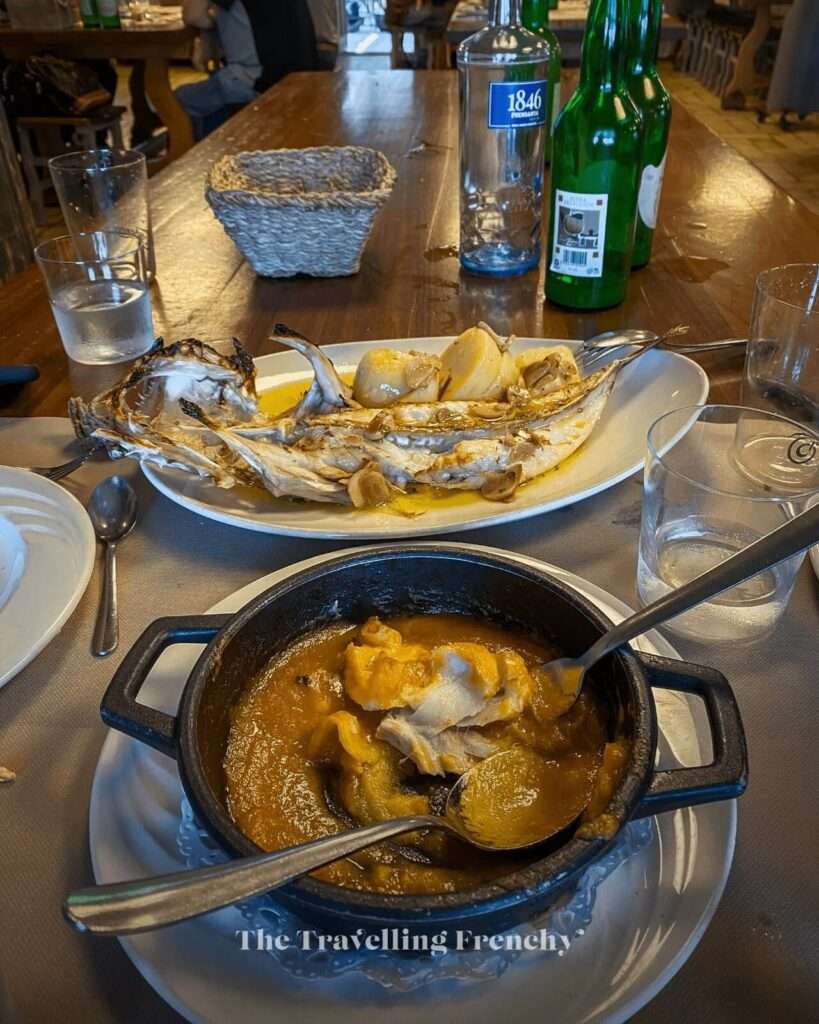
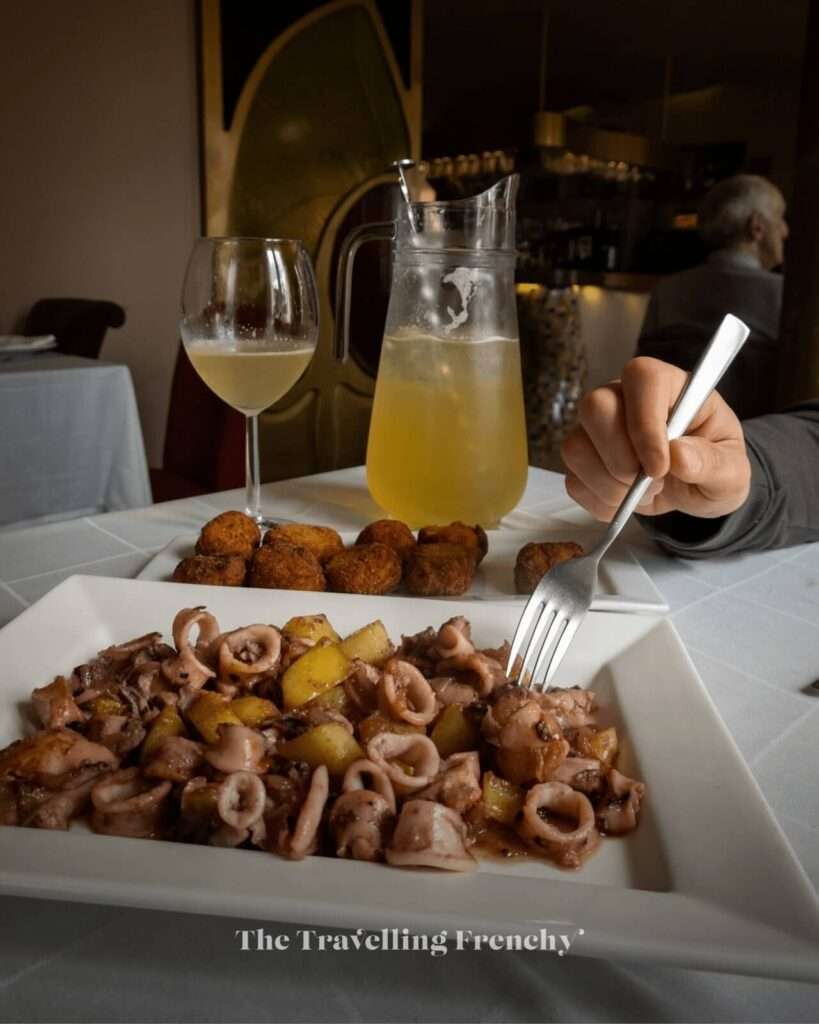
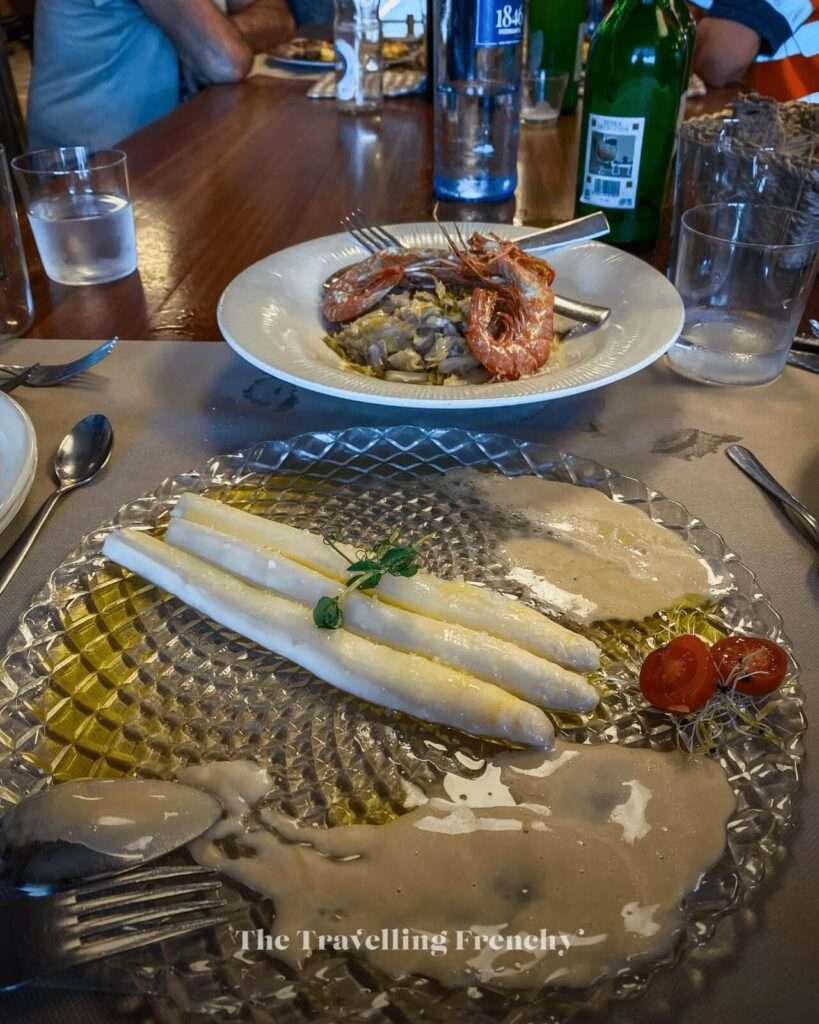
N°10. Grab some food at Mercado del Sur
Tucked inside a striking 19th-century iron-and-glass structure, Mercado del Sur is where Gijón’s everyday rhythm comes alive. Here, stalls brim with fresh seafood, seasonal produce, Asturian cheeses, and local specialties. It’s more than a market; it’s a slice of daily life, full of flavor and character.

Opening Hours: It is open daily until PM (but closed on Sundays).
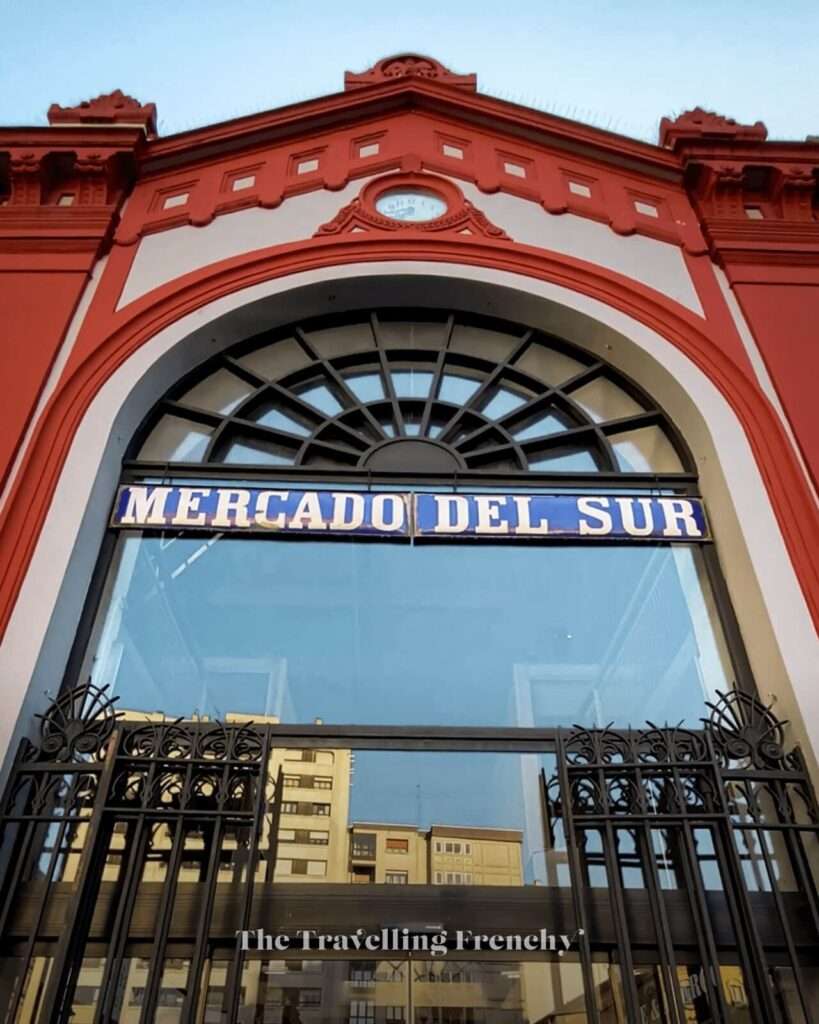
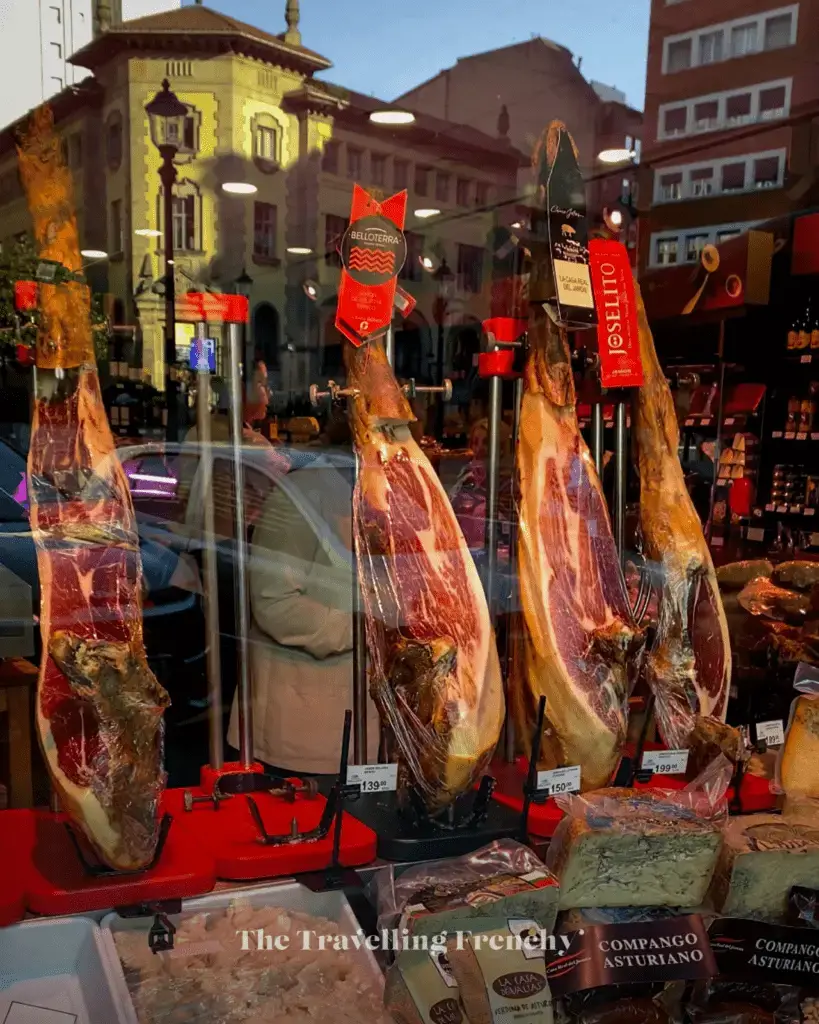
N° 11. Go to the Laboral Ciudad de la Cultura
The Laboral Ciudad de la Cultura is a massive cultural and educational complex in Gijón and the largest civilian building in Spain. It was originally built in the 1950s as a huge boarding school for orphans and children of workers. Thousands of students lived and studied here they had classrooms, dorms, kitchens, even their own church and laundry facilities. It was like a self-contained world that was restored and that you can visit today. Today, it is a vibrant hub housing art centers, a theater, a conservatory, broadcasting studios, and more since its transformation into a 21st-century cultural city in 2007.

Travel Tip: You can visit the inside by joining a guided tour (€6 general / €4.50 reduced) at scheduled times (Fridays through Sundays at 12 PM & 5 PM) (extended weekend tours include the Old Kitchens and a climb to the Mirador de la Torre) or opt for a €2.50 ticket just to ascend the tower for panoramic views.
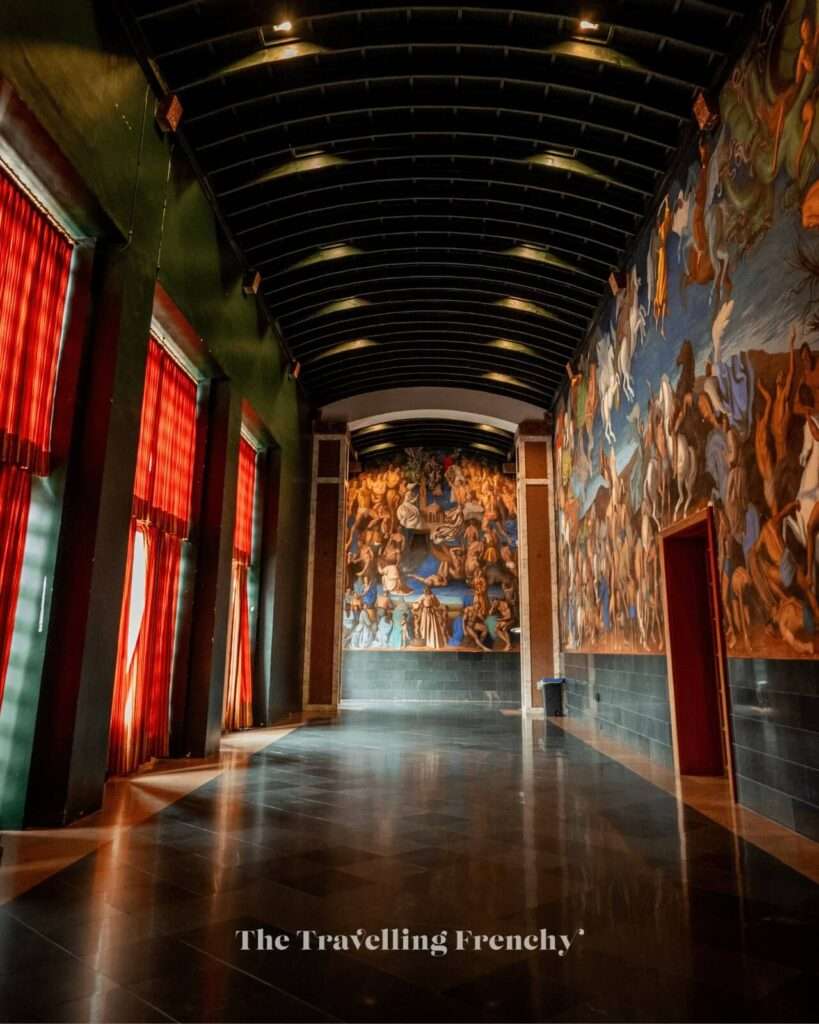
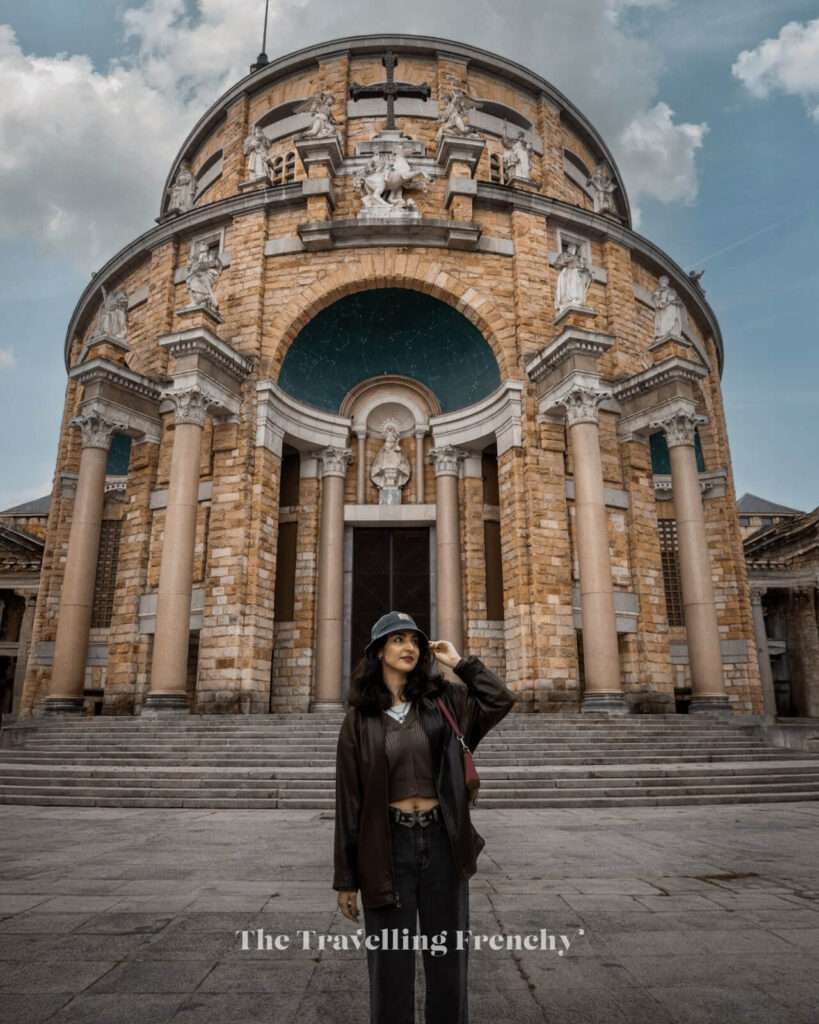
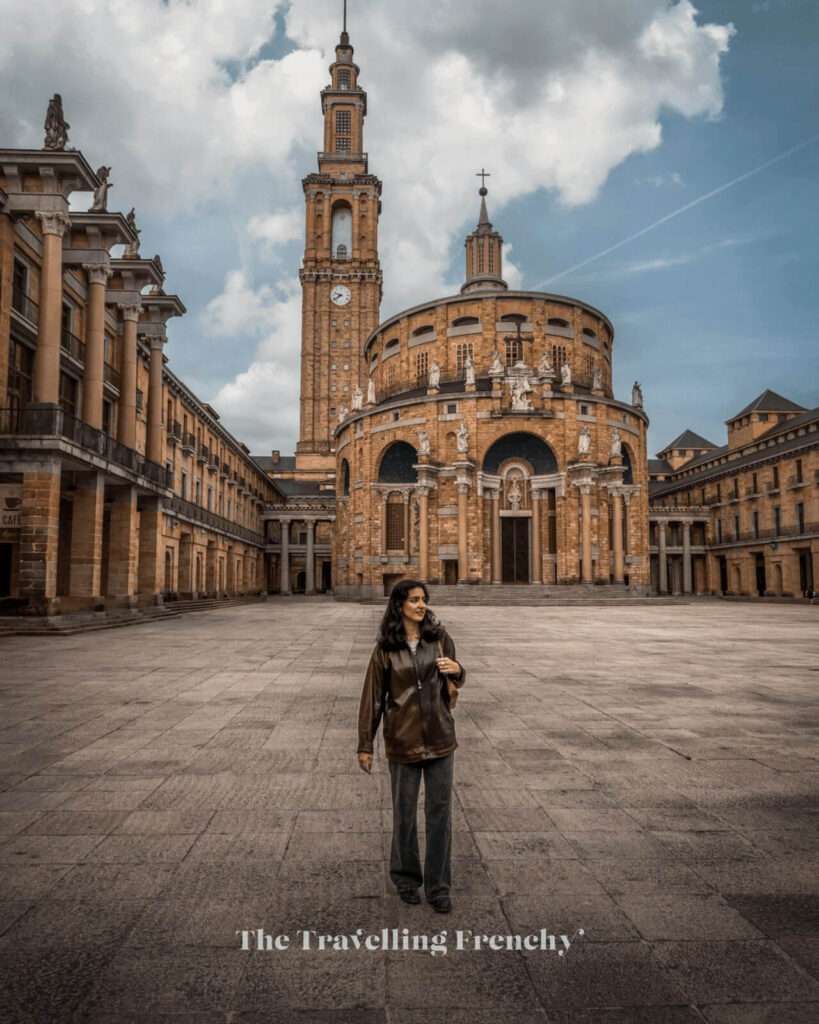
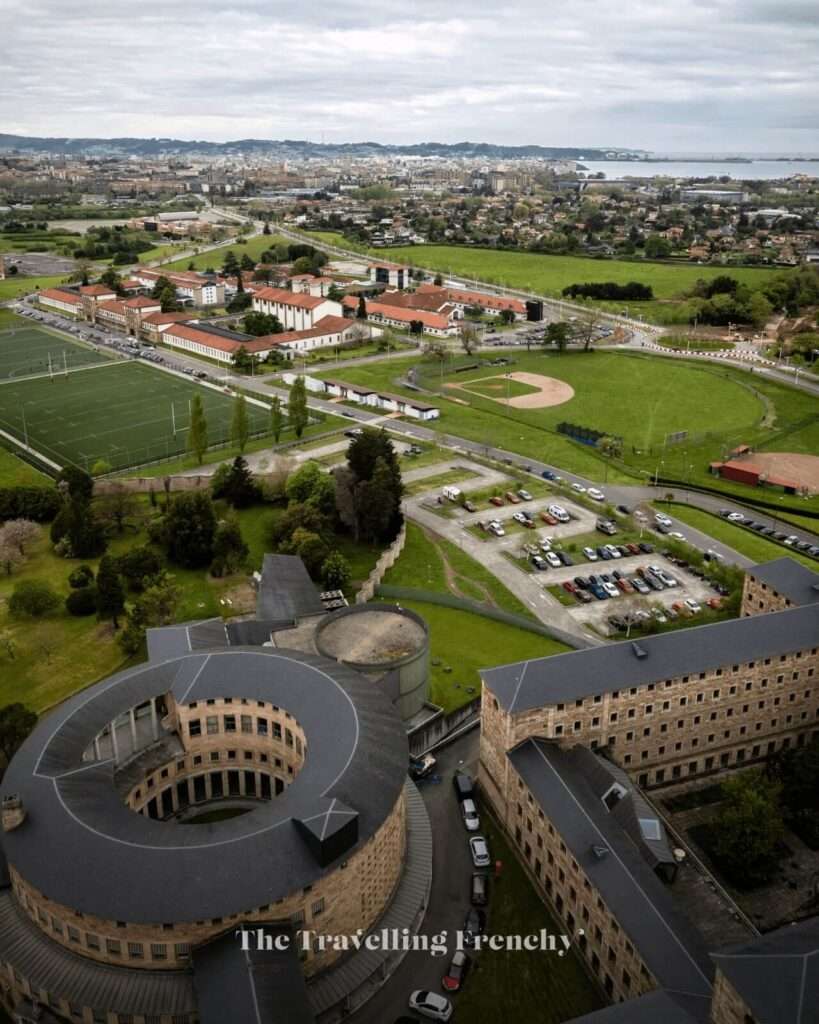
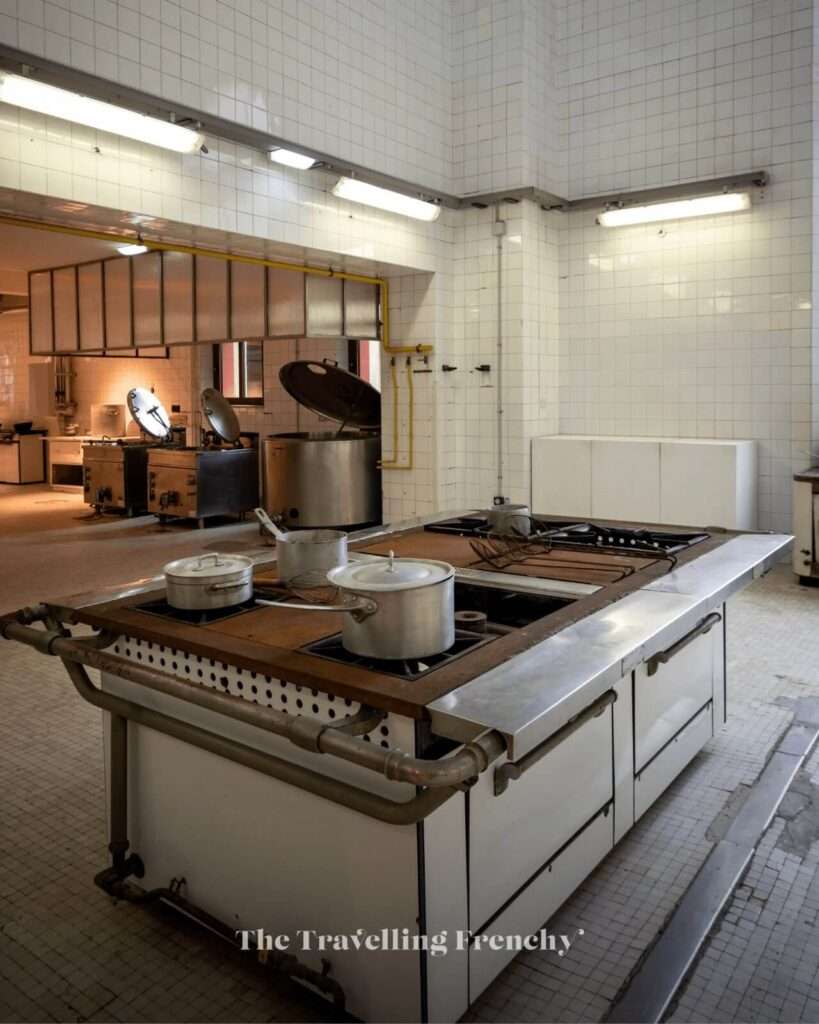
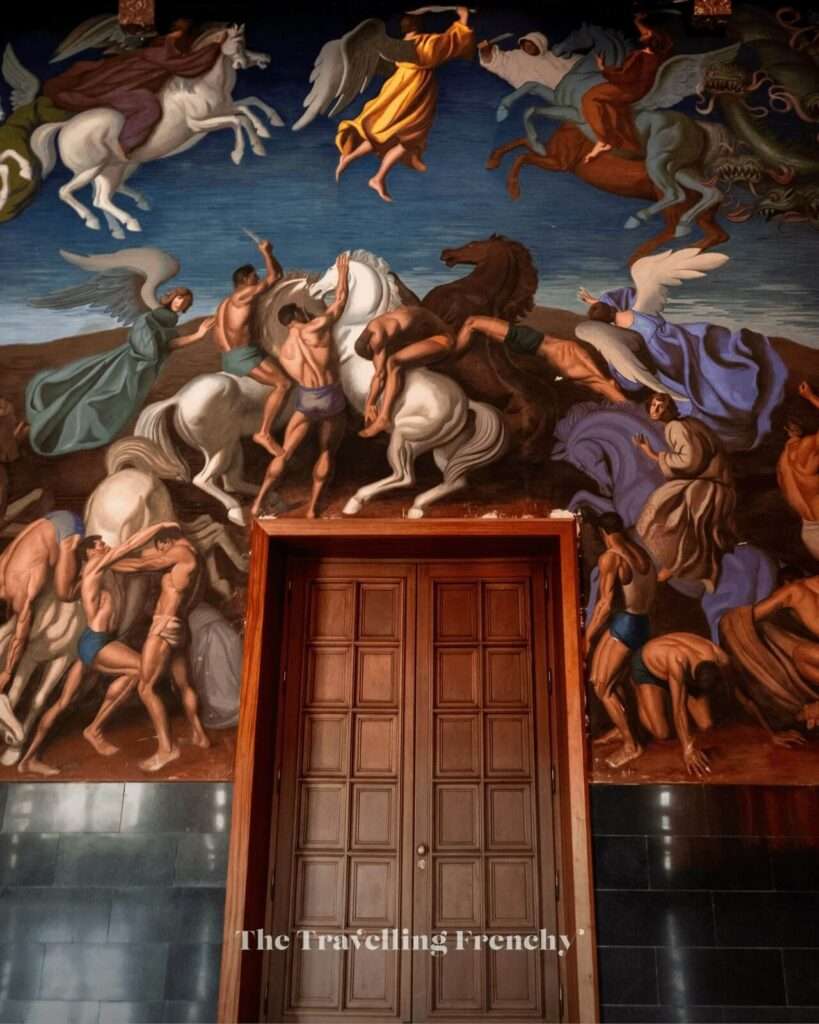
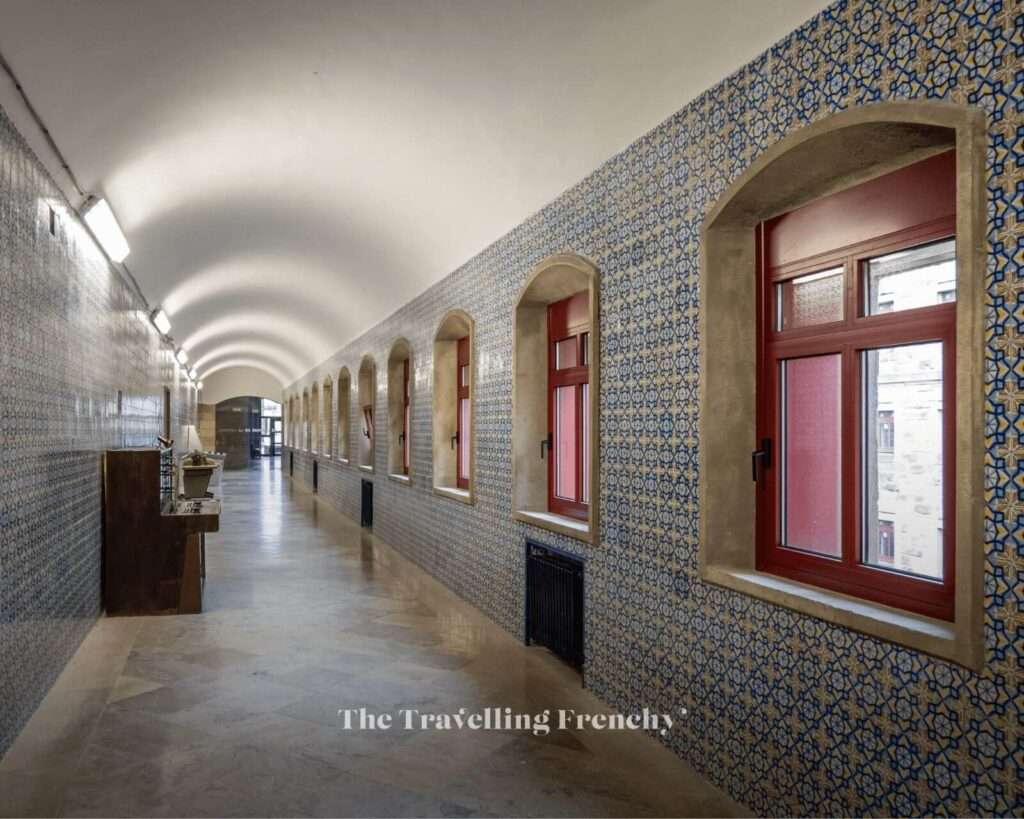
N°12. Visit the Atlantic Botanical Garden
The Atlantic Botanical Garden (Jardín Botánico Atlántico) in Gijón is a 16‑hectare living museum of North Atlantic flora, featuring over 30,000 plants across four themed zones — Cantabrian Environment, Plant Factory, historic “La Isla,” and Atlantic Itinerary — set amid natural woodlands, interactive educational exhibits, and a restored Asturian farmhouse. I absolutely loved spending time there, it was one of the best botanical gardens I’ve ever been to!

Opening Hours: it’s open Tuesday–Sunday (10 AM–18 PM in winter, extended to 9 PM in summer), costs €2.90 for adults (with discounts for youth and seniors), and offers free entry during Christmas.
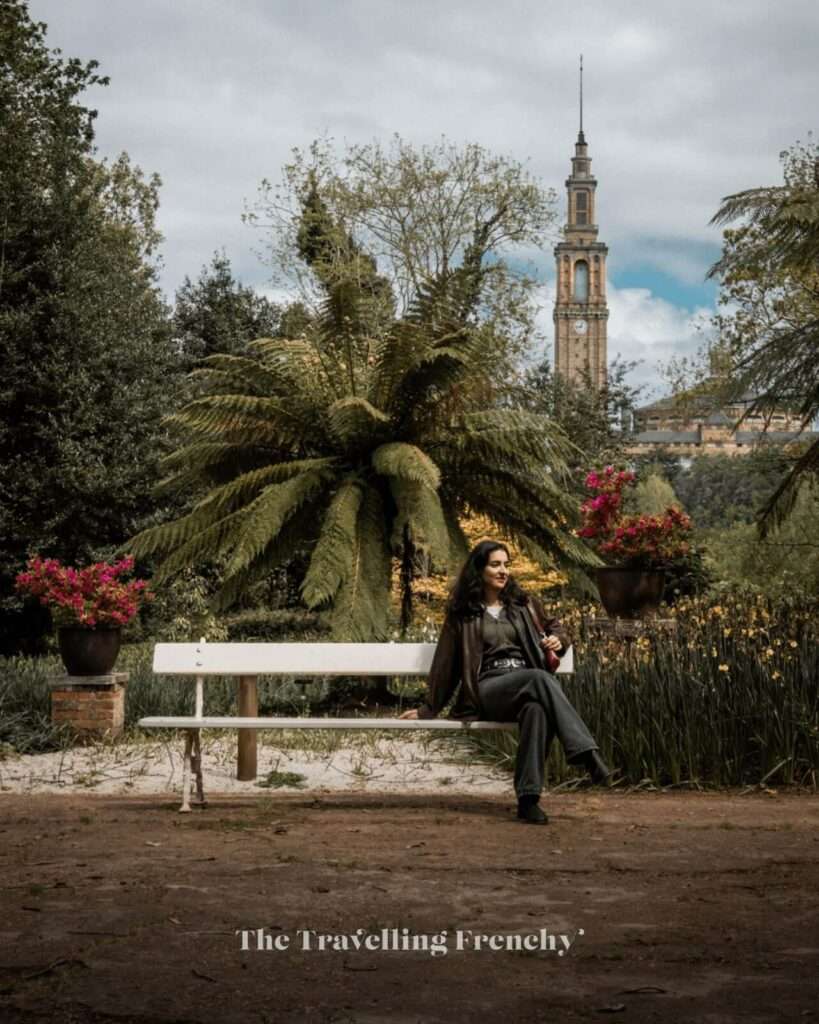
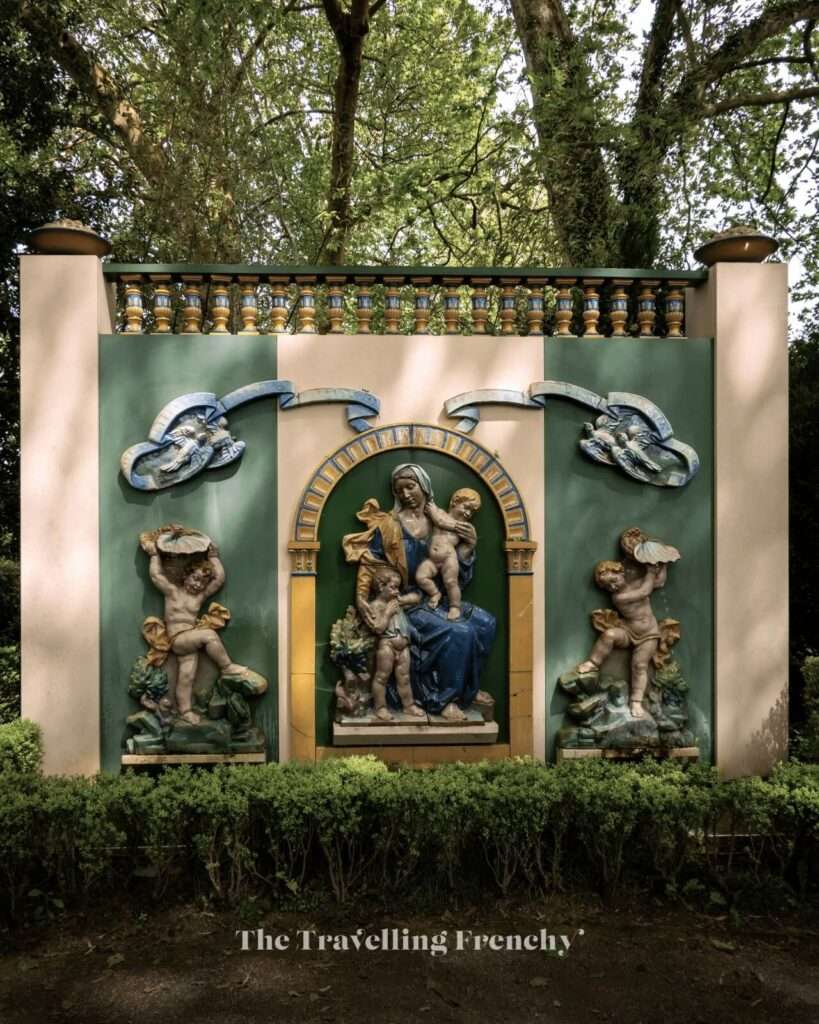
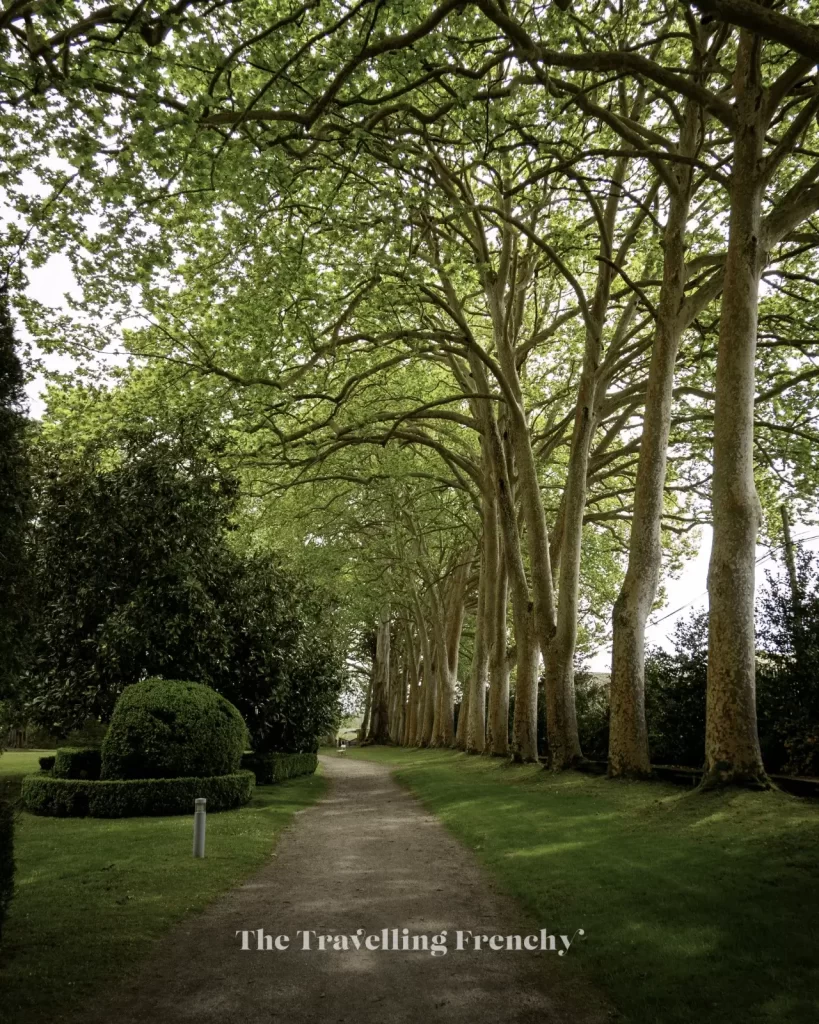
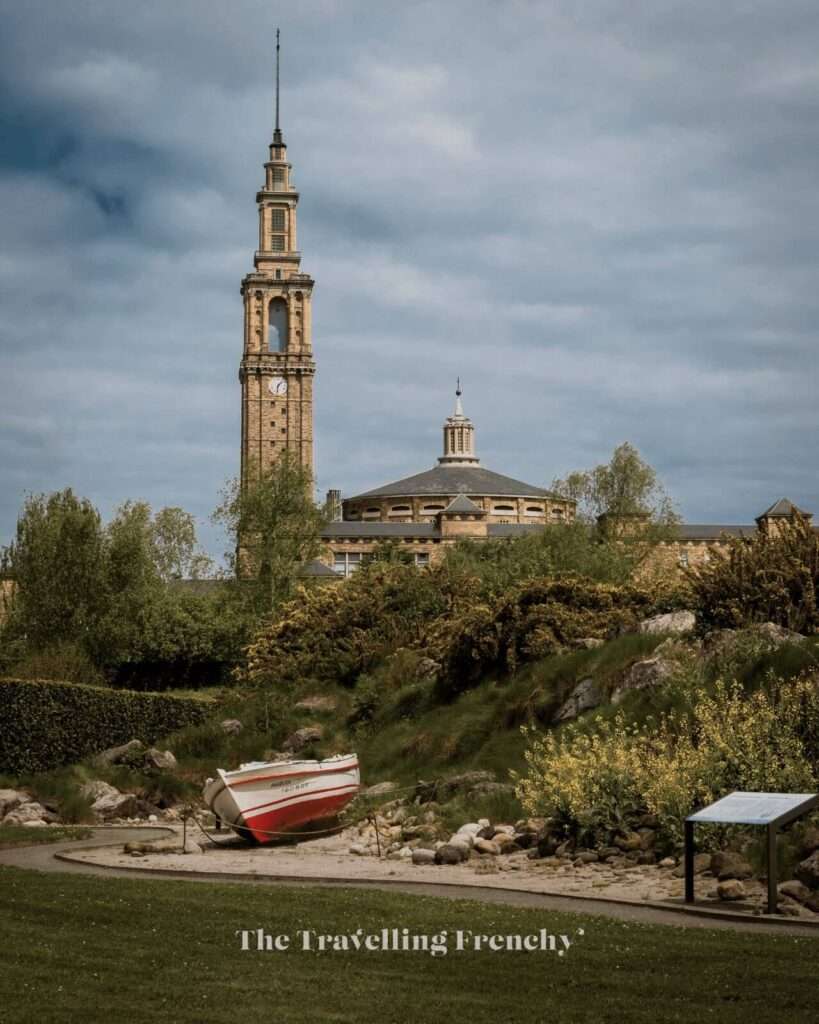
N°13. Visit the Iglesia de San Lorenzo
The Iglesia de San Lorenzo, designed by Luis Bellido y González and completed in 1901, is Gijón’s striking neo-Gothic church, featuring twin-towered pinnacles, a grand rose window, and a richly decorated interior adorned with luminous stained glass, pointed arches, and a polychrome Gothic-style altarpiece.
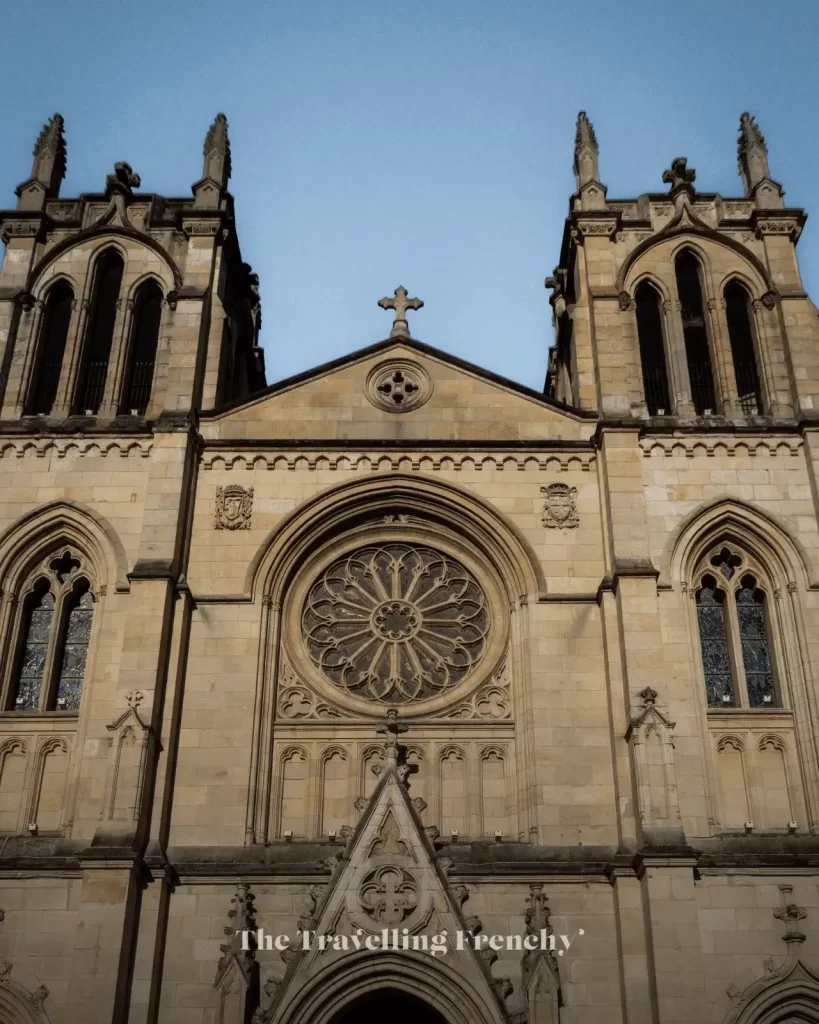
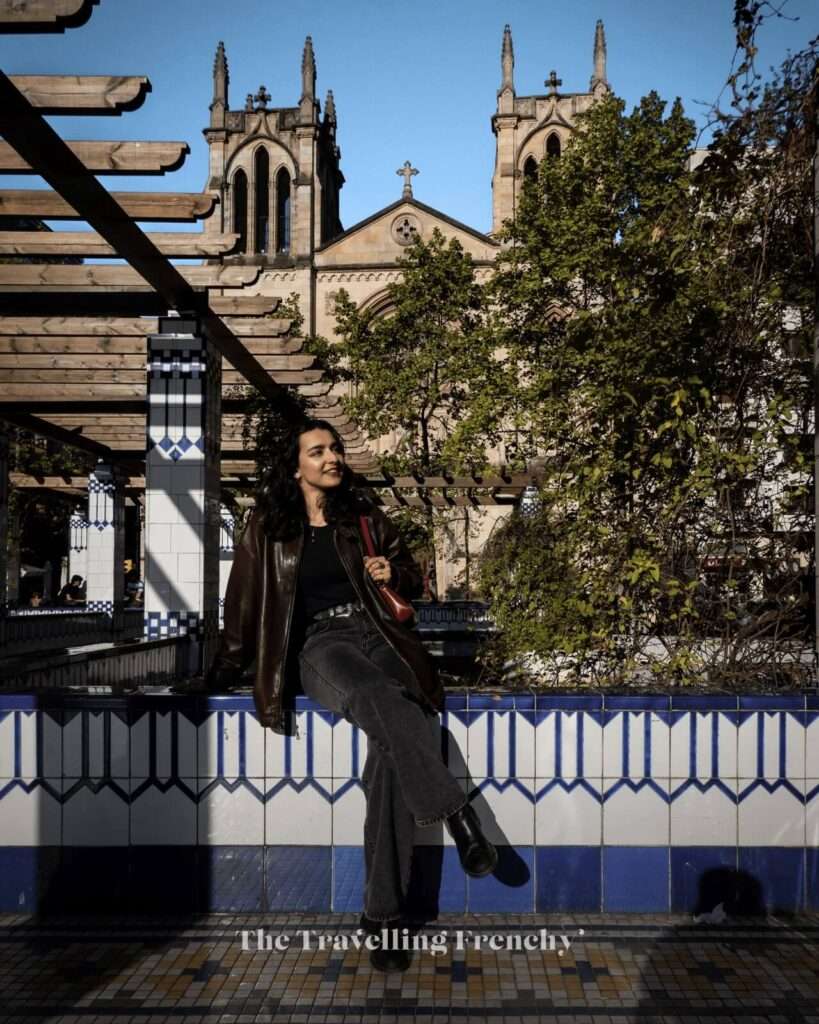
N°14. Explore the Roman Baths of Campo Valdés
The Roman Baths of Campo Valdés, located beneath Gijón’s Plaza Mayor, are a fascinating archaeological site dating from the 1st to 4th centuries AD. Visitors can explore well-preserved cold, warm, and hot bath areas via underground walkways and see artifacts like mosaics and ceramics. Admission is free, making it an easy and enriching stop to experience Gijón’s Roman history firsthand.

Opening Hours: It is open Tuesday to Friday from 9:30 AM to 2 PM and 5 PM to 7:30 PM, and on weekends and public holidays from 10 AM to 2 PM and 5 PM to 7:30 PM. It is closed on Mondays and certain holidays.
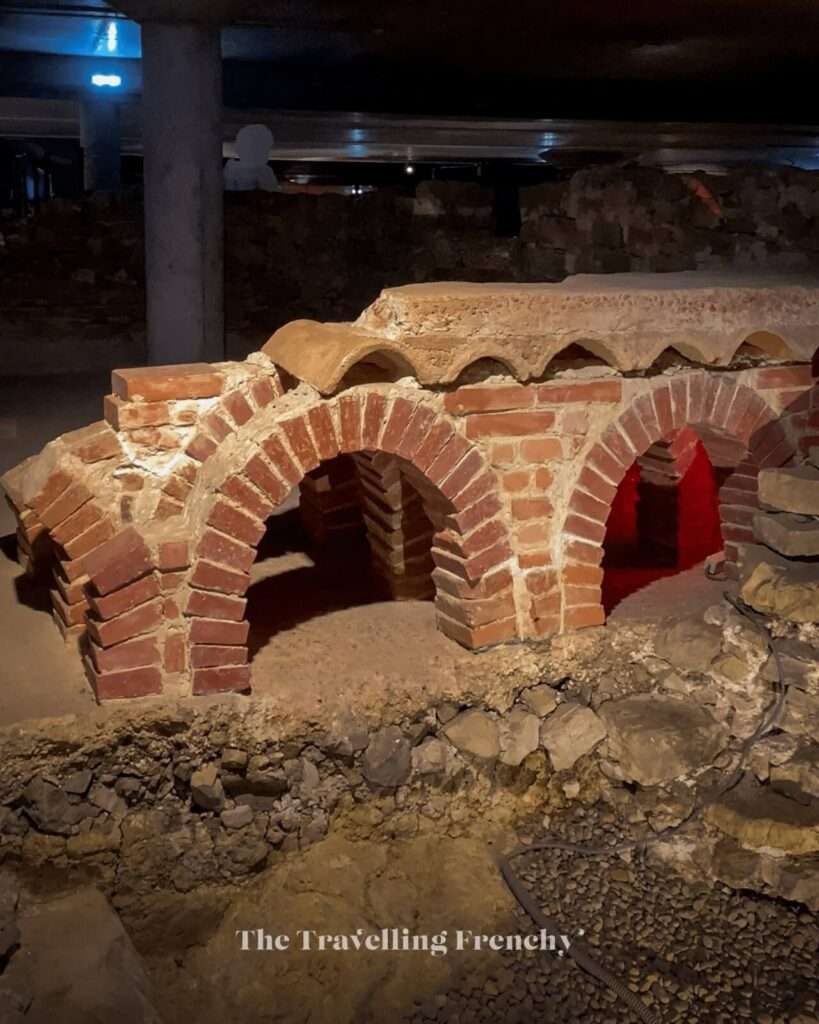
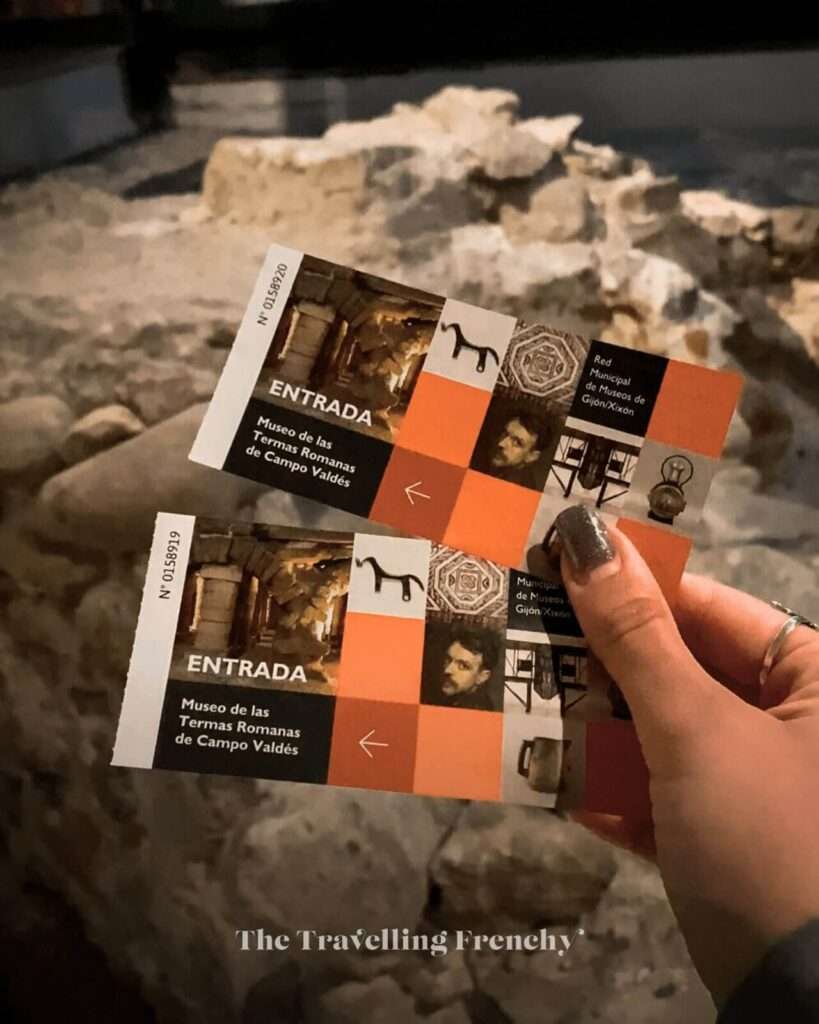
N° 15. Admire Gijon’s Art Nouveau Architectural Heritage
Gijón’s Art Nouveau architecture, locally called Modernismo, offers a fascinating window into the city’s early 20th-century artistic transformation. Flourishing between 1890 and 1910, this style is defined by flowing organic shapes, intricate decorative details, and a seamless fusion of art and functionality. Scattered throughout Gijón’s streets is an unexpected collection of elegant Art Nouveau gems. Buildings like Casa Ladislao Menéndez Bandujo stand out with their delicate floral motifs and graceful ironwork, showcasing the style’s charm and craftsmanship.

Photo Tip: Explore Gijón’s Art Nouveau gems mainly along Calle Corrida, Calle Jovellanos, Calle Cabrales, Calle Instituto, Calle Moros, Calle Trinidad, Calle San Bernardo, Calle Merced, Calle Munuza, Calle Álvarez Garaya, and the plazas like Plaza Mayor and Plaza de Europa.
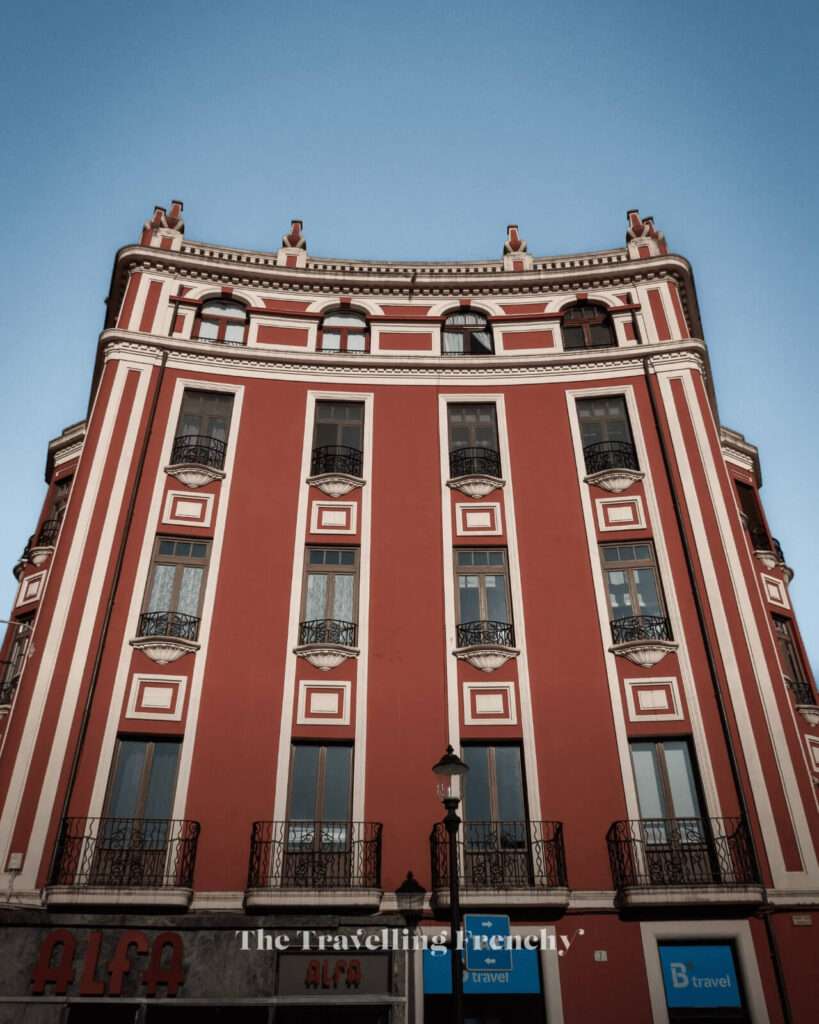
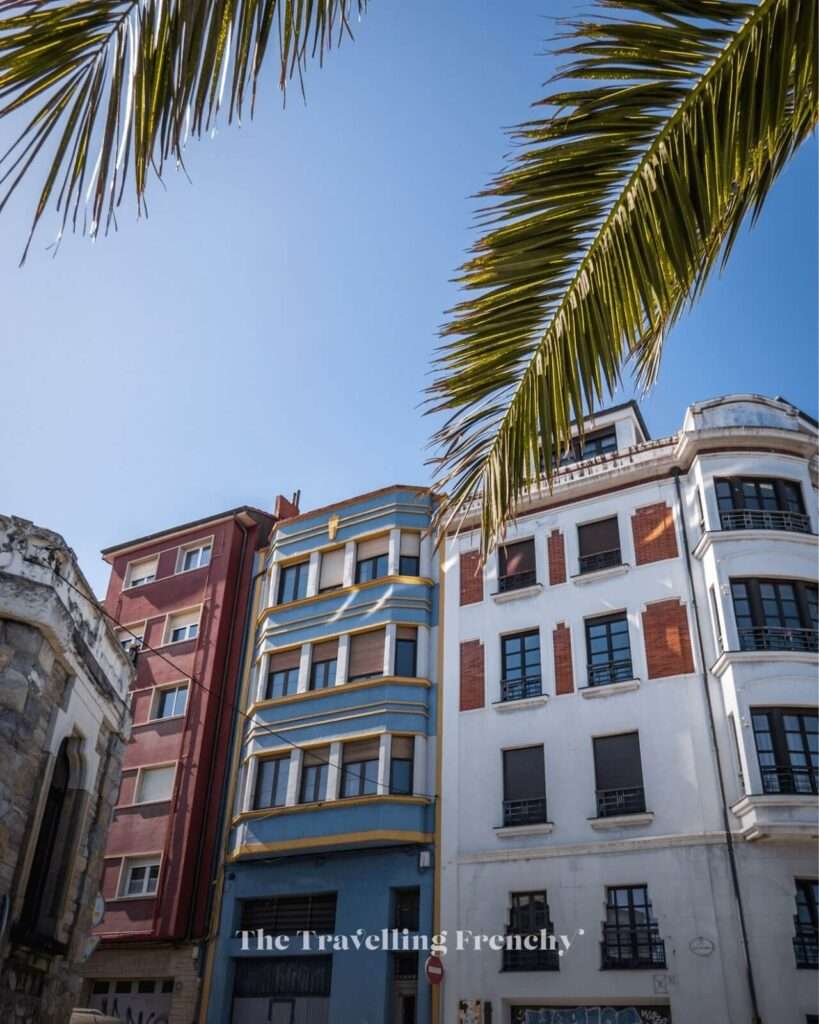
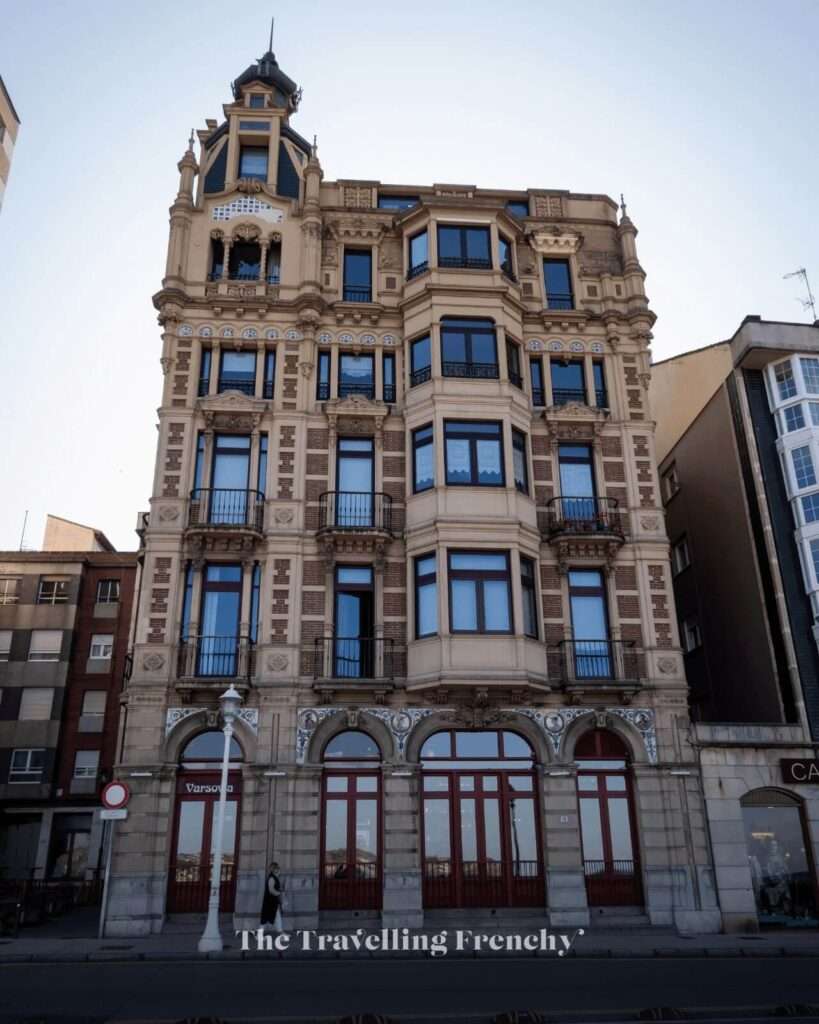
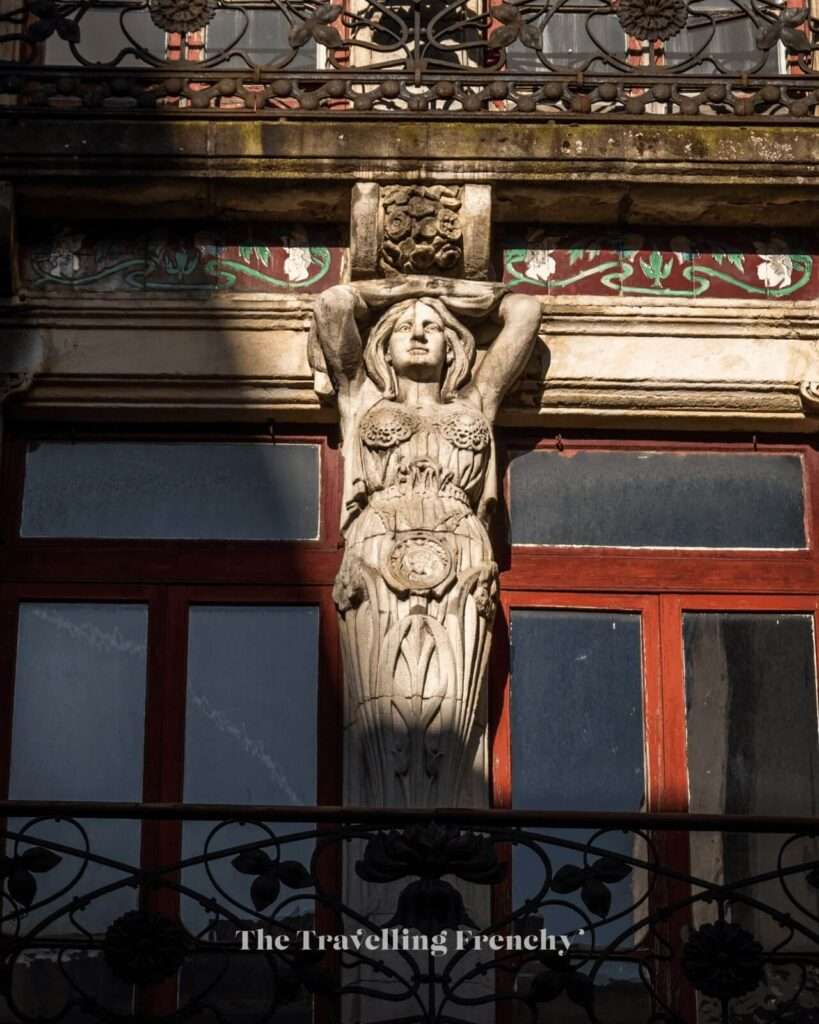
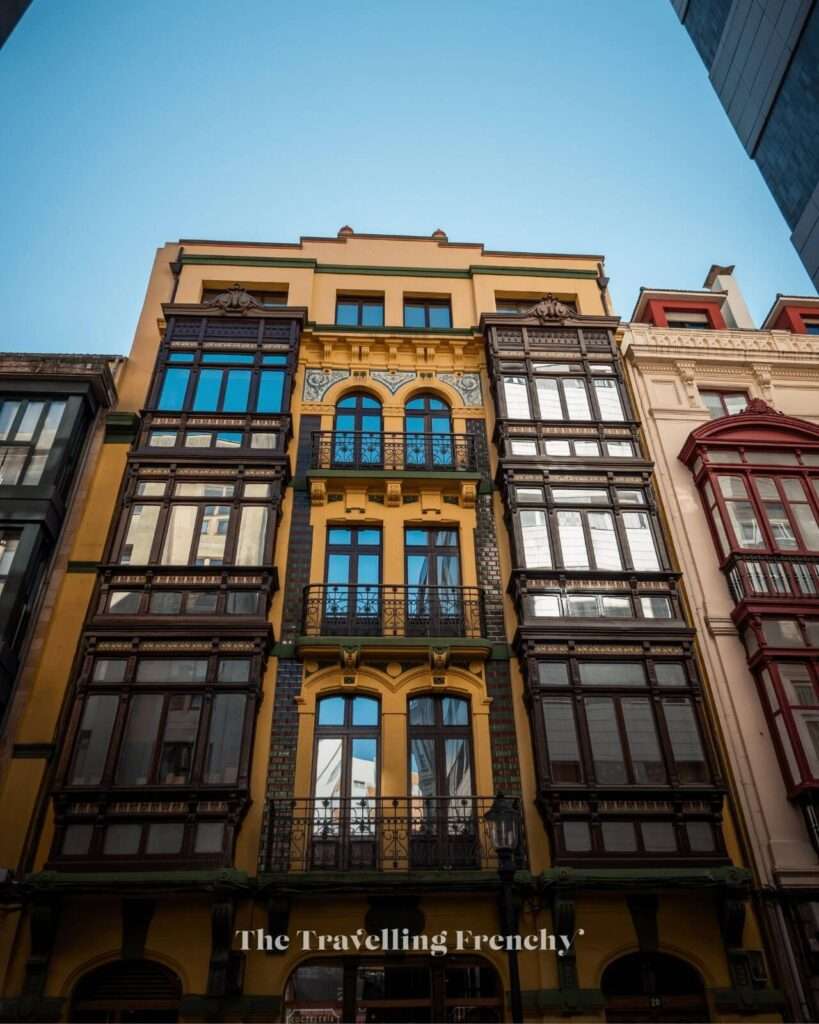
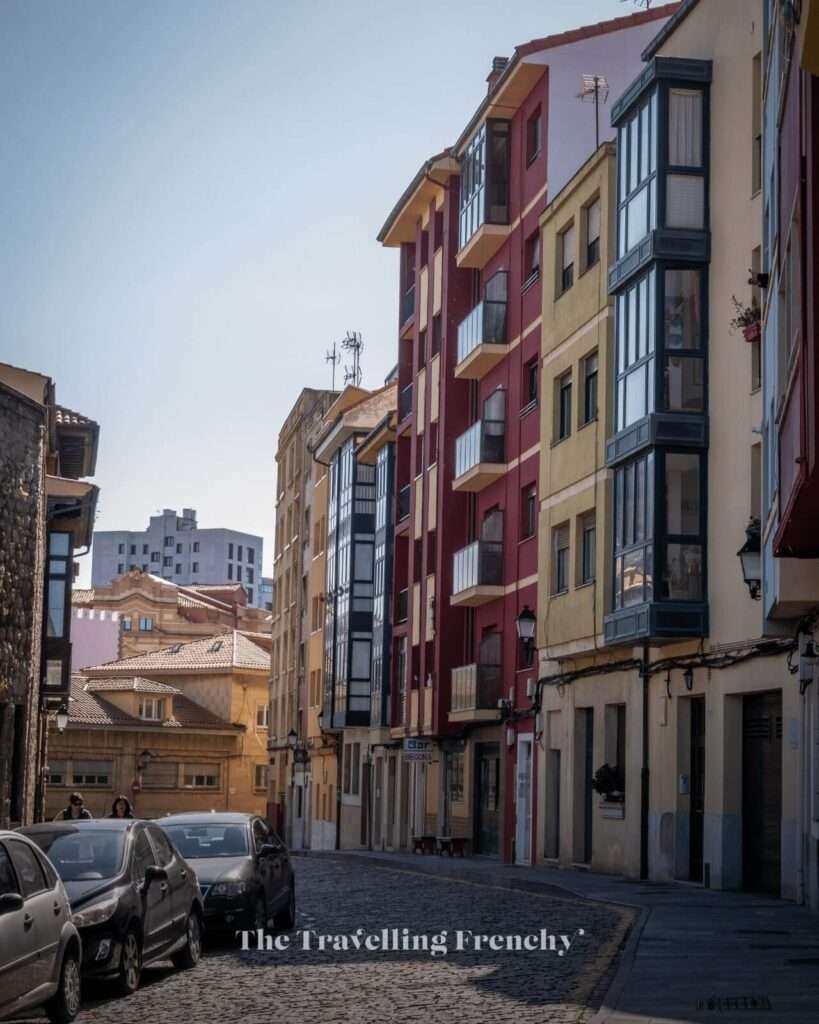
N°16. Go to a Concert at Teatro Jovellanos
The Teatro Jovellanos is Gijon’s central cultural landmark; an early-20th-century theater located on Paseo de Begoña that hosts an eclectic program of concerts, operas, plays, dance performances, film screenings, and festivals year-round, with excellent acoustics and elegant historic-modern interiors.

How to book? You can book a concert by checking the schedule on the official Gijón City website and purchasing tickets online, by phone, or at the theater’s box office.
N°17. Visit The Museum of the Asturian People & the Asturias Railway Museum
The Museum of the Asturian People and the Asturias Railway Museum offer an insightful look into Gijón’s cultural and industrial past. The open-air Asturian museum features traditional homes, granaries, a cider mill, and the International Bagpipe Museum. And the Railway Museum (housed in a 19th-century station) preserves Asturias’s rail story with over 1,000 artifacts, including 140 locomotives of various gauges. Together, they capture the spirit and transformation of the region.

How much does it cost? Museum of the Asturian People: Free entry. Open Tue–Fri (10:00–19:00 in summer, 9:30–18:30 in winter), weekends slightly later. Closed Mondays and major holidays. Asturias Railway Museum: €2.50 entry (free on Sundays). Same hours as above.
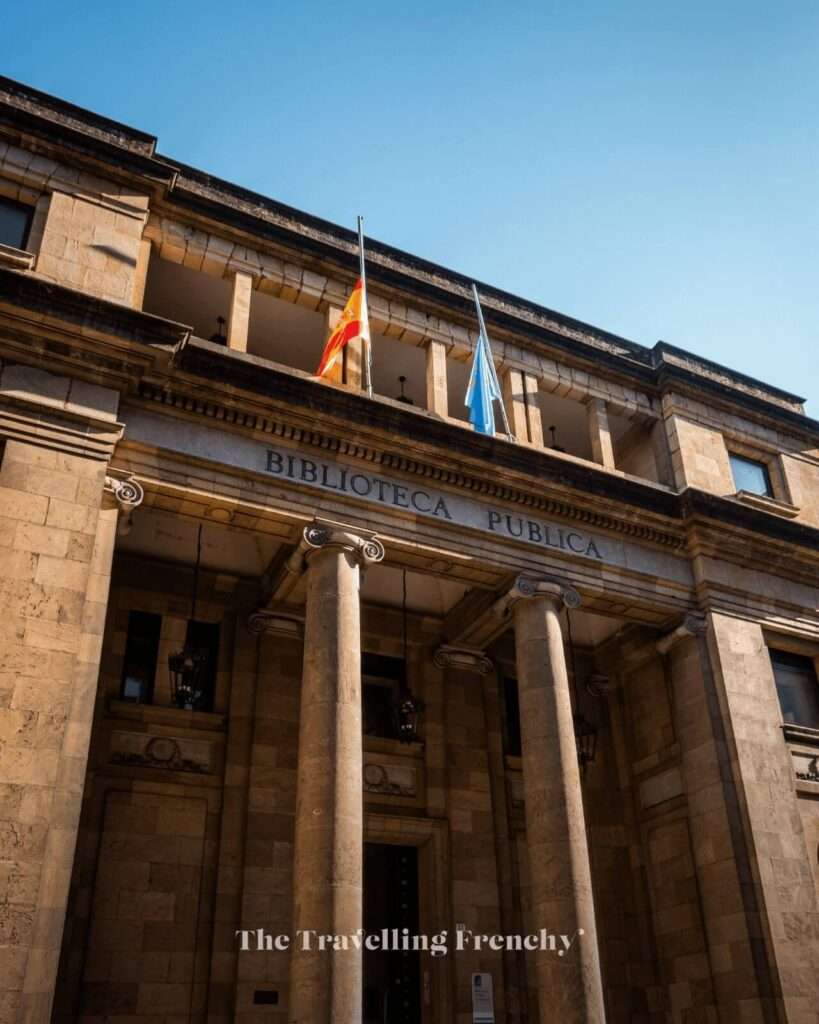
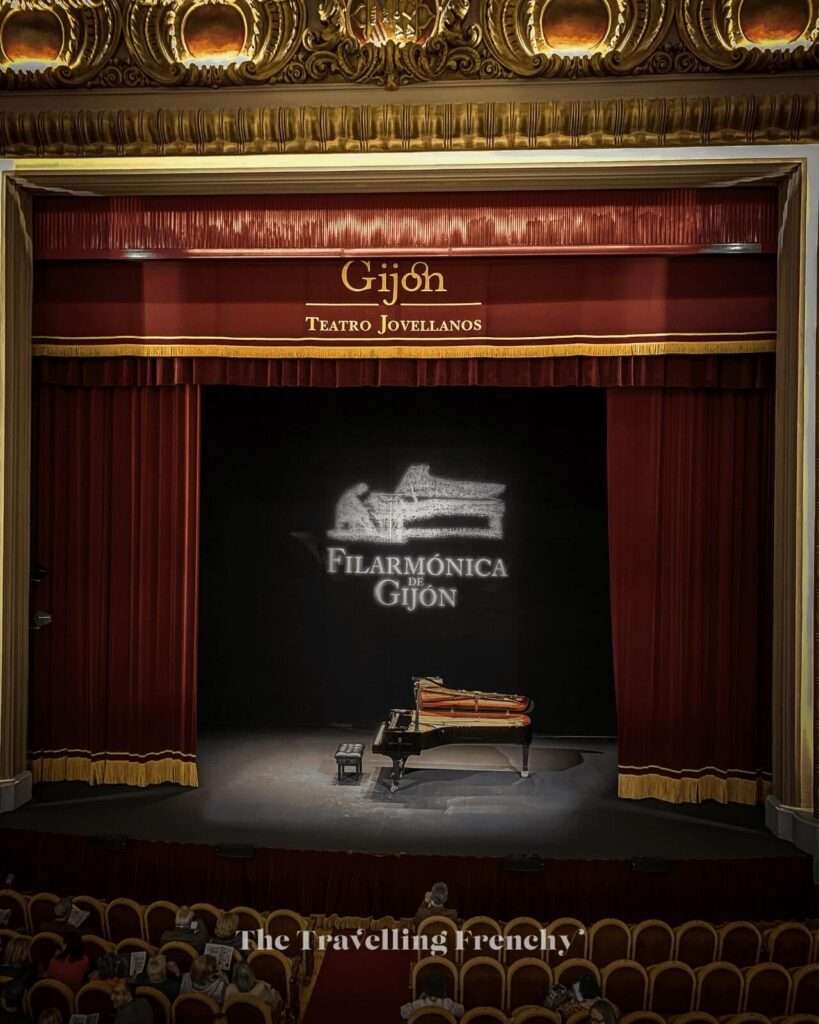
Whether you’re sipping cider like a local, wandering past Art Nouveau façades, or watching the waves roll in at Playa de San Lorenzo, Gijón offers a mix of culture, flavor, and natural beauty that’s hard to match. It’s a city where tradition meets the sea, where every street holds a surprise (from dragon sculptures to historic markets!). Gijon leaves a lasting impression; one that feels real, lived-in, and completely its own.
